
CABLE MODEM
TCM XXX

CABLE MODEM
TCM XXX

Safety Information
CAUTION Disconnect power before servicing.
CAUTION
To ensure reliable operation and to prevent overheating, provide adequate ventilation for this modem and keep it away from heat sources. Do not locate near heat registers or other heat- producing equipment. Provide for free air flow around the cable modem and its power supply.
DOCSIS (TCMXX5) or
The
Power Cord Requirement
This product must be operated with the supplied line cord or with a line cord meeting IEC227 H03
This product is not intended for use in the USA and Canada.
Operating Information
Operating Temperature:0?? - 40?? C
Storage
If you purchased this product at a retail outlet, please read the following:
Product Registration
Please fill out the product registration card that came with this product and return it immediately. Returning the card allows us to contact you if needed.
Keep your sales receipt to obtain warranty parts and service and for proof of purchase. Attach it here and record the serial and model numbers in case you need them. The numbers are located on the back of the product.
Model No. ____________________________________ Serial No _____________________________________________
Purchase Date: _________________________________ Dealer/Address/Phone: _______________________________

1

Introduction
Cable Modem Features
???Capable of receiving data at rates of up to 38Mbps??? (38 Megabits per second).
???Able to send and receive data over the cable line
???Able to connect 2 computers through Ethernet and USB at the same time
???
???ON/OFF button to connect and disconnect access to the internet
???Message waiting notification capability (if allowed by the cable operator)
???Diagnostics via LED or HTTP server (if allowed by the cable operator)
???Able to receive automatic software updates, if initiated by your cable company
???The following may affect the speed of your cable modem: your computer equipment and configuration (processor speed, amount of RAM, available disk space); the number of programs you are running at the same time; the capacity of your ISP; network traffic levels; the number of Ethernet or USB devices in use on your computer. Your cable company may or may not fully support the speed capabilities of this modem.
What???s on the
Insert the cable modem
Note: You will need to use the
???Electronic file of the instruction book in additional languages
???Usage and troubleshooting tips
Accessing the Diagnostics Display through the
A button on the
2

Introduction
Please note that before this page can be displayed, your PC must receive an IP address assignment from the Cable company???s server, over the cable network. You may want to ???bookmark??? the IP address in your browser after the diagnostics page is displayed.
Computer Requirements
Personal computer with the following minimum system requirements (note that the minimum requirements may vary by cable company):
*Windows is a trademark of the Microsoft Corporation. **Macintosh and the Mac OS are trademarks of Apple Computer, Inc.
3

Introduction
Placing the Rubber Feet on the Cable Modem
A set of rubber pads have been packaged with your modem. These pads (or "feet") can be attached to keep the modem from sliding around on your desktop. You have 2 options for placing the pads:
Option 1: Attach the pads to the four slight indentations on the back of the modem.
Option 2: Attach the pads to the ???rudders??? on the bottom of the cable modem. Be sure to equally space the pads for best results.
Cable Modem Overview
 Option 1: Attach the pads to the indentations on the back
Option 1: Attach the pads to the indentations on the back
Option 2: Equally space the feet on the bottom of the unit
This illustration shows a cable company that offers
What the Modem Does
The Thomson digital cable modem serves as a
4
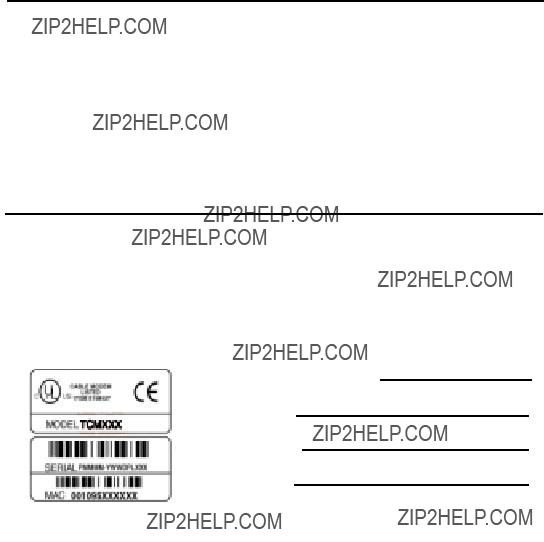
Cable Modem Overview
What the Modem Needs to Do Its Job
???The Right Cable Company: Make sure your local cable company provides data services that use cable TV
???The Internet Service Provider (ISP): Your cable company provides you access to an Internet Service Provider (ISP). The ISP is your gateway to the Internet. It provides you with a pipeline to access Internet content on the World Wide Web (WWW).
Check with your cable company to make sure you have everything you need to begin; they???ll know if you need to install special software or
Before You Begin
Contact Your Local Cable Company
You will need to contact your cable company to establish an internet account before you can use your modem. You should have the following information (which you will find on the sticker on the modem) ready:
???The serial number
???The model number of the modem
???The Media Access Control (MAC) address
Record your information here:
Serial Number:
Model Number:
MAC Address:
5

Before You Begin
Please verify the following with the cable company:
???The cable service to your home supports
???Your internet account has been set up.
???You have a cable outlet near your PC and it is ready for cable modem service.
Note: It is important to supply power to the modem at all times. Keeping your modem plugged in will keep it connected to the Internet. This means that it will always be ready when you are. To disconnect just your computer from the Internet, use the ON/OFF button.
Important Information
Your cable company should always be consulted before installing a new cable outlet. Do not attempt any rewiring without contacting your cable company first.
Note: Graphics used within this publication are for representation only.
6

Connecting the Cable Modem
Connecting the Cable Modem to a Single Computer
This section of the manual explains how to connect your cable modem to the USB or Ethernet port on your computer and install the necessary software. Please refer to figure 1 to help you connect your cable modem for the best possible connection.
Attaching the Cable TV wire to the Cable Modem
1.Locate the Cable TV wire. You may find it one of three ways:
A.Connected directly to a TV, a Cable TV converter box, or VCR. The line will be connected to the jack which should be labeled either IN, CABLE IN, CATV, CATV IN, etc.
B.Connected to a
C.Coming out from under a baseboard heater or other location. See Figure 1 for the wiring example.
Cable drop
Notes: For optimum performance, be sure to connect your cable modem to the first point the cable enters your home.
The splitter must be rated for at least 1GHz.
TV converter
TV
New cable wire
= Splitters
Fig. 1: Basic Home Wiring
7

Connecting the Cable Modem
Important Connection Information
???The cable modem supports both Ethernet and USB connections simultaneously.
???This modem does not support ???Hot Swapping??? of cables. For example, if you want to temporarily connect your laptop where your desktop PC was previously connected, follow these steps:
1.Unplug power supply from the AC outlet.
2.Switch connection type (USB or Ethernet).
3.Plug power back into the AC outlet.
Coaxial Cable
Fig. 2: USB Connection
8

Connecting the Cable Modem
Below are important points to remember before you connect the cable modem:
???You should have a Windows?? 98 SE (Second Edition), Windows Me (Millennium Edition), Windows 2000, Windows XP operating system, Mac OS8 or Mac OS9 to use the Universal Serial Bus (USB) connection.
???For Ethernet connections, go to page 22.
USB Connection
The cable modem CD included with your modem contains the drivers and other information you need to install your cable modem. Follow instructions 1 through 5 to connect the cable modem to the USB port on your computer. Instructions must be followed in the order they appear.
1.Connect one end of the coaxial cable to the cable connection in the wall. Attach the other end of the coaxial cable to the connector on the cable modem labeled ???CABLE??? (Fig. 2) on page 8.
2.Insert the plug from the AC power supply into the power AC jack on cable modem and the
3.Insert the supplied cable modem
4.Close all open applications and dialog boxes, including the cable modem CD window.
Note: Open applications may interfere with your cable modem installation.
5.Connect one end of the USB cable to the USB port located on the back of your computer. Connect the other end of the USB cable to the USB port on the cable modem???s back panel.
Note: Use only the power supply that accompanied this unit. Using other power supplies may damage the unit.
Next, you need to install the USB driver for your operating system:
???If you have Windows 98 SE, go to step 6 on page 10.
???If you have Windows 2000, go to step 6 on page 14.
???If you have Windows Me, go to step 6 on page 18.
???If you have Windows XP, go to step 6 on page 20.
9

Connecting the Cable Modem
Using Windows 98 SE for USB Connection
Follow steps 6 through 14 if you have a Windows 98 SE operating system:
6.When the ???Add New Hardware Wizard??? appears, click ???Next??? to initiate the search for drivers for your USB device. (Fig. 3)
Note: If the ???Add New Hardware Wizard??? did not automatically appear, Windows 98 SE does not recognize the cable modem???s presence because your BIOS (Basic Input/Output System) settings may not permit USB and/or
7.Choose ???Search for the best driver (recommended)??? option, and click ???Next.???
(Fig. 4).
8.Choose ONLY the
9.Choose ???The updated driver (recommended)??? option, and click ???Next??? (Fig. 6).
10
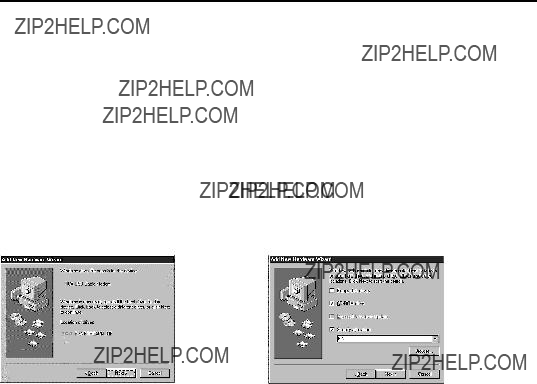
Connecting the Cable Modem
10.The search should find the driver for the ???RCA or Thomson USB Cable Modem??? (Fig. 7). To confirm that this is the case, click ???Next??? to continue and proceed to step 12. Otherwise, see step 11.
Important: Do NOT continue if the search finds ???USB Composite Device??? driver. Proceed to step 11.
11.Follow these instructions only if the driver found was NOT the ???RCA or Thomson USB Cable Modem.???
A.Click ???Back??? to return to the previous window.
B.Ensure that you have selected the
C.In addition to the
D.In the location box, type in your
E.Click ???Next??? to continue.
The search should find the driver for the ???RCA or Thomson USB Cable Modem.???
F.Confirm that this is the driver selected, and click ???Next??? to continue.
(continued on next page)
11

Connecting the Cable Modem
12.Windows should now prompt you to install the ???RCA or Thomson USB Cable Modem??? driver. Click ???Next??? to install the driver.
At this point, your PC needs to copy Windows 98 SE specific files. If these files are not located on your hard drive, you may need to insert your Windows 98 SE installation media (i.e., Windows disks or Windows
13.After the Windows specific files are copied, you may be asked for another USB driver file named ???NETRCACM.SYS???, located on the cable modem
14.Windows now informs you that the installation is complete. Click on ???Finish??? to finalize the process (Fig. 9). When the ???System Settings Change??? window appears, click ???Yes??? to restart your computer.
Fig. 9
12

Connecting the Cable Modem
15.The cable modem installation is now complete. To validate a proper installation, perform the following instructions:
A.Click on the ???Start??? icon in the lower
B.Select ???Settings,??? followed by ???Control Panel.??? The ???Control Panel??? window appears.
C.
D.Scroll down the list until you come to ???Network Adapters.???
If the ???RCA or Thomson USB Cable Modem??? does not exist, the cable modem was NOT installed correctly, go to Solution 2 on page 35.
13

Connecting the Cable Modem
Using Windows 2000 for USB Connection
Follow steps 6 through 14 if you have a Windows 2000 operating system:
6.When the ???Found New Hardware Wizard??? appears, click ???Next??? to initiate the search for drivers for your USB device (Fig. 10).
Note: If Windows 2000 does not recognize the cable modem???s presence, your BIOS settings may not permit USB and/or
7.Choose the ???Search for a suitable driver for my device (recommended)??? option, and click ???Next??? (Fig. 11).
8.Choose ONLY the
Fig. 12
14

Connecting the Cable Modem
9.The search should find the driver for the ???RCA or Thomson DCM 2xx Cable Modem???
(Fig. 13). To confirm that this is the case, click ???Next??? to continue and proceed to step 11. Otherwise, see step 10.
Important: Do NOT continue if the search finds ???USB Composite Device??? driver. Proceed to step 10.
10.Follow these instructions ONLY if the driver found was NOT the ???RCA or Thomson DCM 2xx Cable Modem.???
A.Click ???Back??? to return to the previous window.
B.Ensure that you have selected the
C.In addition to the
D.In the location box, type in your
E.Click ???Next??? to continue.
The search should find either ???RCA or Thomson USB Cable Modem??? or ???RCA or Thomson DCM 2xx Cable Modem.???
(continued on next page)
15
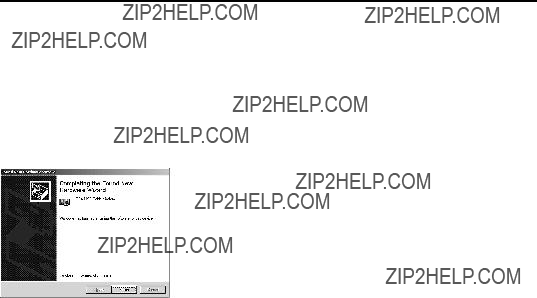
Connecting the Cable Modem
11.Windows should now prompt you to install either the ???RCA or Thomson USB Cable Modem??? or ???RCA or Thomson DCM 2xx Cable Modem.??? Click ???Next??? to install the driver.
At this point your PC needs to copy Windows 2000 specific files. If these files are not located on your hard drive, you may need to insert your Windows 2000 installation media (i.e., Windows 2000
12.After the Windows specific files are copied, you may be asked for another USB driver file named ???NETRCACM.SYS,??? located on the cable modem
13.Click on ???Finish??? to complete the process (Fig. 15).
Fig. 15
16

Connecting the Cable Modem
14.The cable modem installation is now complete. To validate a proper installation, perform the following instructions:
A.Click on the ???Start??? icon in the lower
B.Select ???Settings,??? followed by ???Control Panel.??? The ???Control Panel??? window appears.
C.
D.Scroll down the list until you come to ???Network Adapters.???
The ???RCA or Thomson USB Cable Modem??? should exist. If the ???RCA or Thomson USB Cable Modem??? does not exist, the cable modem was NOT installed correctly. Go to Solution 2 on page 35.
17

Connecting the Cable Modem
Using Windows Me for USB Connection
Follow steps 6 through 9 if you have a Windows Me operating system:
6.Windows Me will briefly display the ???Found New Hardware Wizard,??? and automatically proceed to the ???Add New Hardware Wizard??? (Fig. 16).
Choose the ???Automatic search for a better driver (Recommended)??? option, and click ???Next.???
Note: If Windows Me does not recognize the cable modem???s presence, i.e., the ???Add New Hardware Wizard??? did not automatically appear, your BIOS settings may not permit USB and/ or
7.The automatic search should find and install the driver for the ???RCA or Thomson USB Cable Modem??? (Fig. 17). Click on ???Finish??? to complete the process.
8.When the ???System Settings Change??? window appears, click ???Yes??? to restart your computer (Fig. 18).
Fig. 18
18

Connecting the Cable Modem
9.The Thomson cable modem installation is now complete. To validate a proper installation, perform the following instructions:
???Click on the ???Start??? icon in the lower
???Select ???Settings,??? followed by ???Control Panel.??? The ???Control Panel??? window will appear.
???
???Scroll down the list until you come to ???Network Adapters.???
???The ???RCA or Thomson USB Cable Modem??? should exist. If ???RCA or Thomson USB Cable Modem??? does not exist, the cable modem was NOT installed correctly. Go to Solution 2 on page 35.
19

Connecting the Cable Modem
Using Windows XP for USB Connection
Follow steps 6 through 9 if you have a Windows XP operating system:
6.Windows XP will briefly display the ???Welcome to the Found New Hardware Wizard,??? (Fig. 19) and ask you to insert the installation
Choose the ???Install the software automatically (Recommended)??? option, and click ???Next.???
Note: If Windows XP does not recognize the cable modem???s presence, i.e., the ???Welcome to the New Hardware Wizard??? did not automatically appear, your BIOS settings may not permit USB and/or
7.Your computer will install the drivers for the ???RCA or Thomson USB Cable Modem??? (Fig. 20). Click on ???Next??? to complete the process.
20

Connecting the Cable Modem
8.When the ???Completing the Found New Hardware Wizard??? window appears, click ???Finish??? to complete the process (Fig. 21).
9.The Thomson cable modem installation is now complete. To validate a proper installation, perform the following instructions:
???Click on the ???Start??? icon in the lower
???Select ???Settings,??? followed by ???Control Panel.??? The ???Control Panel??? window will appear.
???
???Scroll down the list until you come to ???Network Adapters.???
???The ???RCA or Thomson USB Cable Modem??? should exist. If ???RCA or Thomson USB Cable Modem??? does not exist, the cable modem was NOT installed correctly. Go to Solution 2 on page 35.
Fig. 21
21
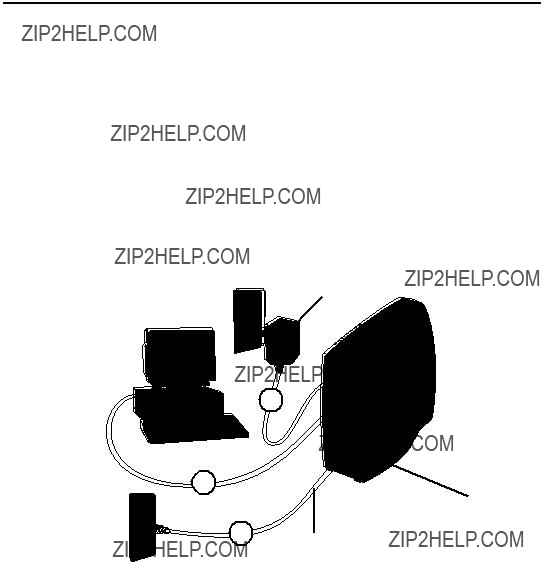
Connecting the Cable Modem
Ethernet Connection to One Computer
Make the connections to the modem in the following sequence (Fig. 22):
1.Connect one end of the coaxial cable to the cable connection in the wall, and the other end to the connector on the modem labeled ???CABLE.???
2.Insert the plug from the AC power supply into the power AC jack on the cable modem and the
Note: Use only the power supply that accompanied this unit. Using other adapters may damage the unit.
3.Connect one end of the Ethernet cable
Make sure that the Ethernet cable is
AC Power Supply
2
9V D C
8 00 m A
RESET
ETHERNET
USB
3
CABLE jack
Fig. 22: Ethernet Connection
22

Connecting the Cable Modem
Connecting More Than Two Computers to the Cable Modem
If you need to connect more than two computers or if you need to connect two computers, but USB is not available, you???ll need the following additonal equipment (if supported by your cable operator):
???
???10BaseT or 100BaseT Hub or Switch
???Straight through, or standard, category 5 Ethernet cable (one for each computer to be connected)
If you have a hub with an uplink port*, a straight through cable can be used in combination with that port in lieu of the crossover cable.
???Null??? cable (not supplied)

 Ethernet Hub
Ethernet Hub
Standard Ethernet cables (one supplied)
Fig. 23: Ethernet Hub Connection
*An uplink port has a small switch on it to change the polarity of the connection. It can accept either a crossover or a straight cable, depending on the setting.
23

Activating the Cable Modem
Initialization Mode
After you install the cable modem and turn it on for the first time (and each time the modem is reconnected to the power), it goes through five steps before it can be used. Each of these steps is represented by a different pattern of flashing lights on the front of the modem.
Note: All indicators flash once prior to the initialization sequence.
X

X

2.Ranging ??? The modem is now tuned to a downstream cable modem channel and can now receive data. Now it searches for an upstream channel so that it can send data.
X

X

X

3.Connecting ??? The cable modem is now
The cable company is establishing IP connectivity with your modem.
X

X

X

X

4.Configuring ??? The cable modem received its IP address and is downloading its configuration file from the Internet Service Provider (ISP).
X

X

X

X

X

5.Registering ??? The cable modem configuration is complete. It is registering its
* Actual button or LED names may vary per model.
Legend  Off On XFlashing
Off On XFlashing
24

Additional Information
Buttons
ON/OFF (INTERNET ON/OFF)* ??? Turns the Internet connection ON and OFF for additional security. In OFF mode, the CABLE ACTIVITY LED is also disabled.
Important: Do not press this button when transmitting data over the internet. The information will be lost and your Internet connection disabled.
Indicators ??? Operational Mode
POWER (INTERNET)* ??? Indicates whether the Internet Connection is active.
PC LINK ??? Indicates whether the connection between the computer and the modem is active (ready to transmit/receive) or actually transmitting/ receiving. The light is off when no carrier is present (or the modem is in standby mode), on when the carrier is present but there???s no transmit/ receive activity, and flashing when there is transmit/receive activity.
CABLE
ACTIVITY (CABLE ACTIVITY)* ??? Indicates the existence of data traffic in the cable lines. The light is off when no data traffic is present and flashing when data activity exists.
EMAIL (MESSAGE)* ??? This light flashes when you have mail or message (if available through service provider).
Note: If all of the lights are flashing sequentially, it means the cable modem is automatically updating its system software. Please wait for the lights to stop flashing. You cannot use your modem during this time. Do not remove the power supply or reset the cable modem during this process.
* Actual button or LED names may vary per model.
25
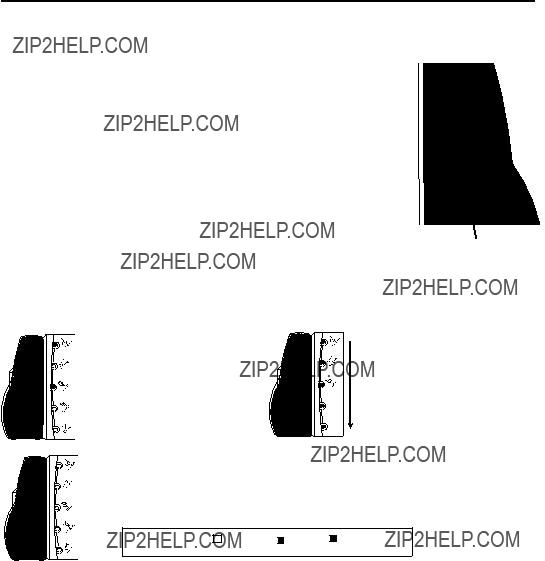
Using the Cable Modem
Reset Switch
The reset switch can be found behind a ???toothpick hole??? on the back panel. It performs two functions:
???Basic Reset ??? Press and release the switch to make it perform the same function as disconnecting the power from the modem. It will start up again in Initialization Mode, see page 24.
???Factory Default Reset ??? Unplug the modem from the AC power. Press and hold the reset switch while plugging the modem into AC power. Continue holding the switch. Release the switch when all lights come on (about 6 seconds). This will return the modem to a factory ???out of box??? condition. This should only be done if the cable modem has been taken out of service in one location and is being reconnected to a different service, or if instructed to do so by your cable company.
USB ETHERNET RESET 800mA C
Reset switch
Other Status Indicators
Three other status light patterns you may see are:
X

X

All lights are off. The cable modem is in security mode.
* Actual button or LED names may vary per model.
26

Frequently Asked Questions
Frequently Asked Questions
Q.What if I don???t subscribe to cable TV?
A.If cable TV is available in your area, data service may be made available with or without cable TV service. Contact your local cable company for complete information on cable services, including
Q.How do I get the system installed?
A.Professional installation from your cable provider is strongly recommended. They will ensure proper cable connection to the modem and your computer. However, your retailer may have offered a self installation kit, including the necessary software to communicate with your cable ISP.
Q.Once my cable modem is connected, how do I get access to the Internet?
A.Your local cable company provides your internet service*, offering a wide range of services including email, chat, and news and information services, and a connection to the World Wide Web.
Q.Can I watch TV and surf the Internet at the same time?
A.Absolutely! And your phone line won???t be tied up while you???re online.
Q.Can I run more than one computer on the modem?
A.Yes ??? a single cable modem can support up to 32 computers using Ethernet connectivity.**
Q.What do you mean by ???Broadband????
A.Simply put, it means you???ll be getting information through a ???bigger pipe,??? with more bandwidth, than a standard phone line can offer. A wider, ???broader??? band means more information, more quickly.
*Monthly subscription fee applies.
**Additional equipment required. Contact your cable company and ISP for any restrictions or additional fees.
(continued on next page)
27

Frequently Asked Questions
Q.What is DOCSIS and what does it mean?
A.???Data Over Cable Service Interface Specifications??? is the industry standard that most cable companies are adopting as they upgrade their systems. Should you ever decide to move, the
Q.What is EuroDOCSIS and what does it mean?
A.EuroDOCSIS is the modified DOCSIS standard to accomodate European cable systems and more generally 8 MHz channel spacing cable networks.
*If the DOCSIS downstream frequencies match the EuroDOCSIS frequency range.
28

General Troubleshooting
General Troubleshooting
I can???t access the internet or my email.
???Check all of the connections to your cable modem.
???Your Ethernet card or USB port may not be working. Check each product???s documentation for more information.
???The Network Properties of your operating system may not be installed correctly or the settings may be incorrect. Check with your ISP or cable company.
Nothing happens when I press the on/off button.
???Make sure that the AC power supply is fully plugged into a wall outlet.
???Make sure that the power supply cord is fully inserted into the AC adapter connection on the back of the modem.
???
All of the lights are flashing in sequence.
???This means the cable modem is automatically updating its system software. Please wait for the lights to stop flashing. The updating process typically lasts less than one minute.
???Do not remove the power supply or reset the cable modem during this process.
The light labeled EMAIL (MESSAGE)* is flashing (if available).
???This means that you have new mail to check or a message from your cable operator.
* Actual button or LED names may vary per model.
29

General Troubleshooting
I can???t get the modem to establish an Ethernet connection.
???Even new computers don???t always have Ethernet capabilities ??? be sure to verify that your computer has a properly installed Ethernet card and the driver software to support it.
???Check to see that you are using the right type of Ethernet cable (see page 22).
The modem won???t register a cable connection (Cable light not on continuously).
???If the modem is in Initialization Mode, the Power Light will be flashing. Call your Cable company if it has not completed this
???The modem should work with a standard
???If you subscribe to video service over cable, the cable signal may not be reaching the modem. Confirm that good quality cable television pictures are available to the coaxial connector you are using by connecting a television to it. If your cable outlet is ???dead??? call your Cable company.
30

USB Troubleshooting
USB Installation Troubleshooting
This section is provided to assist those users who have followed the instructions in this instruction book, and who are still experiencing problems with their USB installation.
Symptoms
???Network error message appears during installation, see below.
???Cable modem does not transfer data (pass traffic, i.e., The ???PC LINK??? light on your cable modem is not flashing), go to page 35.
???Cable modem stops transferring data, go to page 39.
???Windows response is sluggish once the USB cable is connected, go to page 39.
???Windows response is sluggish following a computer reboot, go to page 39.
???The hourglass stays up for several minutes, go to page 39.
???A network error message is displayed, go to page 39.
???The cable modem was successfully installed. Following the cable modem installation, you install or update an Internet Service Provider???s software (e.g., AOL). Now, the cable modem is no longer functioning properly. (Windows 98 SE only), go to page 40.
Symptom 1
Network error message appears during installation
A network error message may appear if there are too many network devices installed on your computer system. This message may resemble Figure 1 (TS Fig. 1) below.
TS Fig. 1
31

USB Troubleshooting
Solution 1:
In this situation, the cable modem is not installed correctly. Therefore, you must:
A.Uninstall the USB cable modem.
B.Remove another network adapter to allow sufficient space on your computer system for the USB cable modem.
C.Reinstall the USB cable modem.
1A. Uninstall USB cable modem
Windows 98 SE
1)Remove the ???RCA or Thomson USB Cable Modem??? network adapter following the Windows 98 SE instructions outlined in Solution 1B, Remove Another Network Adapter, on page 34.
2)Remove both the ???netrcacm.sys??? and the ???netrcacm.inf??? file.
a)Left click on the ???Start??? icon in the lower
b)Select ???Find,??? followed by ???Files and Folders.??? The ???Find All Files??? window (TS Fig. 2) appears.
TS Fig. 2
c)In the ???Named:??? box, type ???netrcacm.??? In the
d)Click the ???Include subfolders??? box, and press ???Find Now.???
The ???netrcacm.sys??? file and the ???netrcacm.inf??? file should both appear.
e)Highlight both files and right click on ???Delete.???
f)The ???Confirm Multiple File Delete??? window appears. Click on ???Yes??? to confirm your approval to delete both files.
g)Close all open windows.
32

USB Troubleshooting
Windows 2000
1)Remove the ???RCA or Thomson USB Cable Modem??? network adapter following the Windows 2000 instructions outlined in Solution 1B, Remove Another Network Adapter, on page 34.
2)Remove the ???netrcacm.sys.???
a)Left click on the ???Start??? icon in the lower
b)Select ???Search,??? followed by ???For Files or Folders.??? The ???Search Results??? window appears. The window may resemble the one below (TS fig. 3).
c)In the ???Containing Text:??? box, type ???netrcacm.??? In the ???Look in:??? box, use the pull down menu to select your local hard drive (e.g., ???c:\???), and press ???Search Now.???
The search should find the netrcacm.sys file.
d)Highlight this file and press ???Delete.???
e)The ???Confirm File Delete??? window appears. Click on ???Yes??? to confirm your approval to delete this file.
f)Close all open windows.
3)Remove the correct ???inf??? file.
Note: In Windows 2000, the name of the ???inf??? file may not be consistent.
a)Left click on the ???Start??? icon in the lower
b)Select ???Search,??? followed by ???For Files or Folders.??? The ???Search Results??? window appears.
TS Fig. 3
33

USB Troubleshooting
c)In the ???Search for Files or Folders named:??? box, type ???oem?.* oem??.*??? In the ???Look in:??? box, use the pull down menu to select your local hard drive (e.g., ???c:\???). Press ???Search Now.???
d)The search should find several oem files (e.g., oem0.inf, oem0.pnf, oem2.inf etc).
e)Highlight each ???oemX.inf??? file individually. Double click on the file to open it. Once the file is open, scroll down to the end of the file. If the end of the file states ???RCA or Thomson USB based Digital Cable Modem Win2000 Driver,??? you have opened the correct file.
f)Close this file. Highlight the name, and press the ???Delete??? key on your keyboard. (e.g., oem2.inf). The ???Confirm File Delete??? window appears. Press ???Yes to All.???
g)In addition to the ???.inf??? file, highlight the equivalent ???.pnf??? file, and press the ???Delete??? key on your keyboard (e.g., oem2.pnf). The ???Confirm File Delete??? window appears. Press ???Yes to All.???
h)Close all open windows.
1B. Remove another Network Adapter
Windows 98 SE
1)Left click on the ???Start??? icon in the lower
2)Select ???Settings,??? followed by ???Control Panel.??? The ???Control Panel??? window appears.
3)
4)Scroll down the list and highlight the network adapter(s) you wish to remove. Click the ???Remove??? button. It is your decision as to which network adapter(s) is removed.
Note: Network adapters are identified in the description box as you scroll down the list.
5)The ???System Settings Change??? window appears. Click ???Yes??? to restart your computer.
Windows 2000
1)Left click on the ???Start??? icon in the lower
2)Select ???Settings,??? followed by ???Control Panel.??? The ???Control Panel??? window appears.
34

USB Troubleshooting
3)
4)Scroll down the list until you come to ???Network Adapters.???
5)Highlight the network adapter(s) you wish to remove and click the ???Action??? tab located in the upper
6)The ???Confirm Device Removal??? window appears. Ensure that the correct network adapter has been selected for removal and click ???Ok.???
1C. Reinstall the cable modem
Reinstall the cable modem by following the instructions on page 9.
Symptom 2:
Cable modem does not transfer data (Pass traffic).
You have completed the cable modem installation, but the cable modem will not transfer data (i.e., The ???PC LINK??? light on your cable modem is not flashing).
Solution 2:
In this situation, the cable modem will not pass traffic. Therefore, you must:
A.Validate a proper installation.
B.Test for the possibility that the Dynamic Host Control Protocol (DHCP) lease from the cable Company is correct if ???RCA or Thomson USB Cable Modem??? exists.
C.Ensure that your RCA or Thomson cable modem network adapter is enabled.
D.Uninstall the USB cable modem if neither A, B, or C is applicable.
2A. Validate a proper installation.
Windows 98 SE
1)Click on the ???Start??? icon in the lower
2)Select ???Settings,??? followed by ???Control Panel.??? The ???Control Panel??? window appears.
35

USB Troubleshooting
3)
4)Scroll down the list until you come to ???Network Adapters.???
The ???RCA or Thomson USB Cable Modem??? should exist. If ???RCA or Thomson USB Cable Modem??? does not exist, the cable modem was NOT installed correctly.
5)If the cable modem was not installed correctly, uninstall the USB cable modem in accordance with the instructions outlined in Solution 1A, Uninstall USB cable modem, on page 32 and attempt a reinstallation following the USB installation on page 9.
Windows 2000
1)Click on the ???Start??? icon in the lower
2)Select ???Settings,??? followed by ???Control Panel.??? The ???Control Panel??? window appears.
3)
4)Scroll down the list until you come to ???Network Adapters.???
The ???RCA USB Cable Modem??? should exist. If ???RCA or Thomson USB Cable Modem??? does not exist, the cable modem was NOT installed correctly.
5)If the cable modem was not installed correctly, uninstall the cable modem in accordance with the instructions outlined in Solution 1A, Uninstall the USB cable modem, on page 32 and attempt a reinstallation following the USB installation on page 9.
2B. Test for the possibility that the Dynamic Host Control Protocol (DHCP) lease from the cable Company is correct if ???RCA or Thomson USB Cable Modem??? exists.
Windows 98 SE
A test known as ???Winipcfg??? can be utilized to determine if this is your problem. Please follow the instructions below to perform the ???Winipcfg??? test.
36

USB Troubleshooting
1)Left click on the ???Start??? icon in the lower
2)Select ???Run.???
3)The ???Run??? window appears. Type ???winipcfg??? in the text box, and click the ???Ok??? button.
4)The ???IP Configuration??? window appears. Use the drop down box to select the ???RCA or Thomson Digital Cable Modem.???
5)A list of addresses should appear. Locate the IP address. If the first three digits of the IP address are ???169,??? your DHCP lease failed. Please contact your Internet Service Provider (ISP) and ensure that they correctly provisioned your service for your digital cable modem with the correct serial number and MAC address.
6)Once the IP configuration error has been corrected, you must unplug the USB cable and plug it back in.
Windows 2000
A test known as ???ipconfig / all ??? can be utilized to determine if this is your problem. Please follow the proceeding instructions to perform the ???ipconfig??? test.
1)Left click on the ???Start??? icon in the lower
2)Select ???Run.??? The Run window appears.
3)Type ???cmd??? in the text box, and click the ???Ok??? button.
4)The command window appears. Type ???ipconfig /all.??? A list of all your adapters appears.
5)Locate the cable modem adapter, and its IP address. If the first three digits of the IP address are ???169,??? your DHCP lease failed. Please contact your Internet Service Provider (ISP) and ensure that they correctly provisioned your service for your digital cable modem with the correct serial number and MAC address.
6)Once the IP configuration error has been corrected, you must unplug the USB cable and plug it back in.
37

USB Troubleshooting
2C. Ensure that your cable modem network adapter is enabled on your computer system.
This may be a problem if you have another network adapter installed on your computer system that is enabled. To disable other network adapters, follow the instructions outlined below.
Windows 98 SE
1)Left click on the ???Start??? icon in the lower
2)Select ???Settings,??? followed by ???Control Panel.??? The ???Control Panel??? window appears.
3)
4)Scroll down the list until you come to ???Network Adapters.???
5)Highlight the network adapter(s) you wish to disable and
6)The selected network adapter window appears. Click the ???Disable in this hardware profiles??? box to disable the network adapter, and click ???Ok.???
7)Close all open windows.
Windows 2000
1)Left click on the ???Start??? icon in the lower
2)Select ???Settings,??? followed by ???Control Panel.??? The ???Control Panel??? window appears.
3)
4)Scroll down the list until you come to ???Network Adapters.???
5)Highlight the network adapter(s) you wish to disable and
38

USB Troubleshooting
6)The selected network adapter window appears. On the pull down menu, select ???Do not use this device (disable) and click ???Ok.???
7)Close all open windows.
2D. Uninstall the USB cable modem if neither A, B, or C is applicable
Uninstall the ???USB cable modem??? in accordance with the instructions outlined in Solution 1A, Uninstall USB cable modem, on page 32.
Symptom 3:
Cable modem stops transferring data (passing traffic).
Cable modem was functioning properly and suddenly stopped transferring data (passing traffic).
Solution 3:
A)Check your cables ??? there might be a disconnected, bent, broken, or coiled cable.
B)Unplug the USB cable, and plug it back in while your computer is operational.
Symptom 4:
Windows response is sluggish once the USB cable is connected. Windows response is sluggish following a computer reboot. The hourglass stays up for several minutes.
A network error message is displayed as shown in the following figure below.
When a network connection first starts, Windows tries to get a network address, also known as an ???IP??? address. This process is called DHCP (Dynamic Host Control Protocol), and it can take several minutes to complete. On Windows 98 SE, an hourglass may appear and the system response may be sluggish.
If the coaxial cable is not connected or the cable network is down, you may see a DHCP error as shown in TS fig. 4.
39

USB Troubleshooting
Solution 4:
A.Wait a few minutes. The cable modem should work properly once the connection is made.
B.If you have waited several minutes and the connection is still not made, follow the instructions outlined in Solution 2B, Test for the Possibility that the Dynamic Host Control Protocol (DHCP) Lease from the Cable Company is Correct if ???RCA or Thomson USB Cable Modem??? Exists, on page 36 to determine if it is a DHCP error. This message may resemble TS Figure 4 below.
TS Fig. 4
Symptom 5:
The cable modem was successfully installed. Following the cable modem installation, you install or update an Internet Service Provider???s software (e.g., AOL.) Now, the cable modem is no longer functioning properly. (Windows 98 SE only)
Some ISP???s installation software automatically creates its own TCP/IP protocols and removes the Thomson cable modem TCP/IP protocol.
Solution 5:
To reconnect your cable modem TCP/IP protocols, follow the instructions below.
1)Click on the ???Start??? icon in the lower
2)Select ???Settings??? followed by ???Control Panel.??? The ???Control Panel??? window appears.
3)Click on the ???Network Neighborhood ??? icon.
4)Choose the ???Configuration??? tab.
5)Scroll down the list until you come to ???RCA or Thomson Cable Modem.??? If ???RCA or Thomson Cable Modem??? is not there, your cable modem is not installed correctly. Please proceed to Solution 1 on page 32.
40

USB Troubleshooting
6)The TCP/IP protocols are located below the ???RCA or Thomson Cable Modem.??? Scroll down the list until you come to ???TCP/IP RCA or Thomson Cable Modem.??? Select it. If ???TCP/IP RCA or Thomson Cable Modem??? is not there, click on the ???Add??? button.
7)The ???Select Network Component Type??? window appears. Select ???Protocol,??? and click on the ???Add??? button.
A new window appears with a ???Manufacturer???s??? window on the
8)In the ???Manufacturer???s??? window, select ???Microsoft.???
9)In the ???Network Protocols??? window, select ???TCP/IP.???
The addition of the ???TCP/IP RCA or Thomson Cable Modem??? protocol should be automatic.
41
This page left intentionally blank.

The Universal Serial Bus is a high speed bus that enables your computer to communicate simultaneously with a variety of peripherals. If you have other peripherals that send and receive a lot of information, such as speakers, printers or scanners, we recommend using an Ethernet card to support this modem.
Connecting the Cable Modem
1.Connect one end of the coaxial cable to the cable connection in the wall, and the other end to the connector on the modem labeled CABLE.
2.a. Insert the plug from the AC power supply into the power AC jack on the cable modem. b. Insert the power cord into the AC adapter, and then plug into an AC outlet.
3.For USB Connection: Connect one end of the USB cable to the USB port on the back of your computer, and the other end to the USB port on the cable modem???s back panel. (See page 9 for instructions on loading the USB driver.)
OR
For Ethernet Connection: Connect one end of the Ethernet cable
43

Quick Reference
Buttons
ON/OFF (INTERNET ON/OFF)* ??? Turns the Internet connection ON and OFF for additional security. In OFF mode, the CABLE ACTIVITY LED is also disabled. Do not press this button when transmitting data over the internet. The information will be lost and your connection disabled.
Light/LED Indicators
POWER (INTERNET)* ??? Indicates whether the Internet Connection is active.
PC LINK ??? Indicates whether the connection between the computer and the modem is active (ready to transmit/receive) or actually transmitting/ receiving. The light is off when no carrier is present (or the modem is in standby mode), on when the carrier is present but there???s no transmit/ receive activity, and flashing when there is transmit/receive activity.
CABLE
ACTIVITY (CABLE ACTIVITY)* ??? Indicates the existence of data traffic in the cable lines. The light is off when no data traffic is present and flashing when data activity exists.
EMAIL (MESSAGE)* ??? This light flashes when you have mail or message (if available through service provider).
Service Information
If you purchased or leased your cable modem directly from your cable company, then warranty service for the cable modem may be provided through your cable provider or its authorized representative. For information on 1) Order Service, 2) Obtaining Customer Support, or 3) Additional Service Information, please contact your cable company. If you purchased your cable modem from a retailer, see the enclosed warranty card.
* Actual button or LED names may vary per model.
44

Glossary
10BaseT ??? Unshielded, twisted pair cable with an
DHCP (Dynamic Host Control Protocol) ??? A protocol which allows a server to dynamically assign IP addresses to workstations on the fly.
DOCSIS (Data Over Cable Service Interface Specifications) ??? A project with the objective of developing a set of necessary specifications and operations support interface specifications for cable modems and associated equipment.
Ethernet card ??? A
EuroDOCSIS ??? The modified DOCSIS standard to accomodate European cable systems and more generally 8 MHz channel spacing cable networks.
F Connector ??? A type of coaxial connector, labeled CABLE IN on the rear of the cable modem, that connects the modem to the cable system.
HTTP (HyperText Transfer Protocol) ??? Invisible to the user, HTTP is used by servers and clients to communicate and display information on a client browser.
Hub ??? A device used to connect multiple computers to the cable modem.
IP Address ??? A unique,
MAC Address ??? The permanent ???identity??? for a device programmed into the Media Access Control layer in the network architecture during the modem???s manufacture.
Network Driver ??? A file that is loaded on the computer to allow the computer to recognize the Ethernet card or USB port.
TCP/IP (Transmission Control Protocol/Internet Protocol) ??? A networking protocol that provides communication across interconnected networks, between computers with diverse hardware architectures and various operating systems.
Universal Serial Bus (USB) ??? USB is a
45

Thomson multimedia Inc.
10330 North Meridian Street
Indianapolis, IN 46290
?? 2002 Thomson multimedia Inc. Trademark(s) Registered
Printed in USA
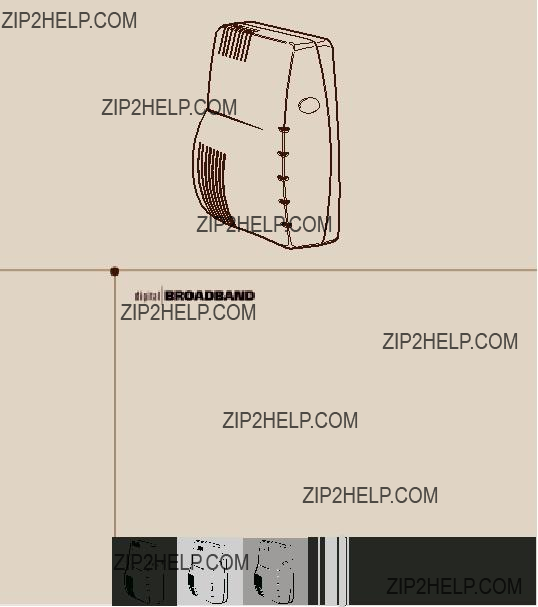
MODEM C??BLE
TCM XXX
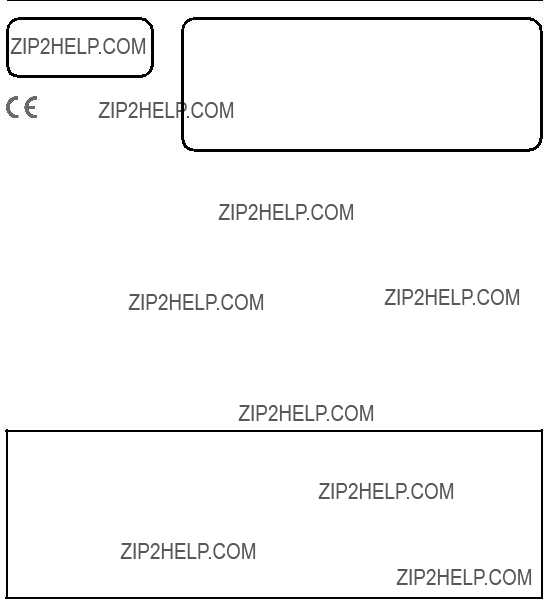
Informations sur la s??curit??
ATTENTION
D??branchez avant d???effectuer l???entretien.
ATTENTION
Dans le but d???assurer un fonctionnement fiable et d?????viter la surchauffe, veillez ?? maintenir une
ventilation ad??quate de ce modem et ?? le garder loin des sources de chaleur. Ne le placez pas ?? proximit?? d???un registre d???air chaud ou d???autres sources de chaleur. Laissez l???air circuler librement autour du modem c??ble et de sa source d???alimentation.
Conforme ?? la norme DOCSIS (TCMXX5) ou
Le produit Euro DOCSIS (num??ro de mod??le finissant par ?? 0 ??) est con??u selon les sp??cifications
Exigences relatives au cordon d???alimentation
Ce produit doit ??tre utilis?? avec le cordon de raccordement fourni ou avec un cordon homologu?? CEI227 HO3
Informations sur l???utilisation
Temp??rature de fonctionnement : 0 ?? C ?? 40 ?? C
Temp??rature d???entreposage :
Si vous avez achet?? ce produit chez un d??taillant, veuillez lire ce qui suit :
Enregistrement du produit
Veuillez remplir la carte d???enregistrement fournie avec ce produit et la retourner imm??diatement. Le renvoi de cette carte nous permet de vous contacter si n??cessaire.
Conservez votre facture comme preuve d???achat et pour obtenir des pi??ces et du service sous garantie.
Num??ro de mod??le _______________________________ Num??ro de s??rie ______________________________________
Date d???achat : ____________________________ D??taillant / Adresse / T??l??phone : ______________________________

1

Introduction
Caract??ristiques du modem c??ble
???R??ception des donn??es jusqu????? un d??bit de 38Mbps??? (38 m??gabits par seconde)
???Envoi et r??ception des donn??es par c??ble
???Peut connecter simultan??ment deux ordinateurs par Ethernet et USB
???Fonctionnement Plug and Play (pr??t ?? l???emploi) pour une installation et une configuration ais??es
???Bouton de marche/arr??t (ON/OFF) pour connecter ou d??connecter l???acc??s ?? Internet
???Capable d???indiquer s???il y a des messages en attente (si permis par le c??blodistributeur)
???Diagnostics par DEL ou serveur HTTP (si permis par le c??blodistributeur)
???Capable de recevoir automatiquement des mises ?? jour de logiciel, si
???Les ??l??ments
Contenu du
Ins??rez le
Nota : Vous devrez utiliser le
Contenu du
???Liens vers les sites Web de Thomson
???Fichiers ??lectroniques du manuel d???instructions en d???autres langues
???Conseils d???utilisation et de d??pannage
Acc??s ?? l?????cran de diagnostic par le
Un bouton sur le menu
2

Introduction
Veuillez noter que, avant de pouvoir afficher cette page, votre PC doit recevoir une affectation d???adresse IP de la part du serveur de votre c??blodistributeur, via le r??seau de c??blodistribution. Une fois la page de diagnostic affich??e, vous pouvez ajouter cette adresse IP aux signets de votre navigateur.
Ordinateur requis
Ordinateur personnel avec la configuration minimale suivante (notez que la configuration minimale peut varier d???un c??blodistributeur ?? un autre) :
Le bus s??rie universel (USB) est un bus tr??s rapide qui permet ?? l???ordinateur de communiquer simultan??ment avec divers p??riph??riques. Toutefois, si d???autres composants envoient et re??oivent beaucoup d???information, comme des
* Windows est une marque de commerce de Microsoft Corporation
** Macintosh et Mac OS sont des marques de commerce de Apple Computer, Inc.
3

Introduction
Installation des pieds en caoutchouc sur le modem c??ble
Un jeu de tampons en caoutchouc est inclus dans l???emballage de votre modem. Vous pouvez fixer ces tampons (ou ?? pieds ??) pour ??viter que le modem ne glisse sur votre bureau. Vous pouvez placer les tampons de deux fa??ons :
Option 1 : Fixez les tampons dans les quatre l??g??res indentations situ??es ?? l???arri??re du modem.
Option 2 : Fixez les tampons sur les ?? pieds ?? situ??s sur la partie inf??rieure du modem. Veillez ?? garder le m??me espace entre les tampons pour obtenir de meilleurs r??sultats.
Le modem c??ble : G??n??ralit??s
 Option 1 : Attachez les tampons aux indentations situ??es ?? l???arri??re
Option 1 : Attachez les tampons aux indentations situ??es ?? l???arri??re
Option 2 : Gardez un espace ??gal entre les pieds dans la partie inf??rieure de l???appareil
Cette illustration montre un c??blodistributeur offrant des services Internet conformes ?? la norme DOCSIS ou EuroDOCSIS
Ce que fait le modem
Le modem c??ble num??rique de Thomson sert de passerelle bidirectionnelle de haut d??bit entre votre ordinateur personnel et un fournisseur de service Internet (FSI) par c??ble. Il convertit les donn??es qui proviennent d???Internet en messages ??lectroniques que votre ordinateur peut comprendre, via les c??bles utilis??s pour transmettre les signaux vid??o.
4

Le modem c??ble : G??n??ralit??s
Ce dont le modem a besoin pour faire son travail
???Le bon c??blodistributeur :
???Le fournisseur de service Internet (FSI) : Votre c??blodistributeur vous donne acc??s ?? un fournisseur de service Internet (FSI). Le FSI est votre porte d???entr??e sur Internet. Il vous fournit le conduit d???acc??s au contenu Internet du Web (ou World Wide Web [WWW]).
Consultez votre c??blodistributeur pour vous assurer que vous avez tout ce qu???il vous faut avant de commencer; il saura si vous devez installer un logiciel sp??cial ou reconfigurer votre ordinateur pour utiliser votre service Internet par c??ble.
Avant de commencer
Contactez votre c??blodistributeur local
Il vous faudra contacter votre c??blodistributeur pour souscrire un abonnement Internet avant de pouvoir utiliser votre modem. Vous devriez avoir ?? votre disposition les informations suivantes (vous les trouverez sur l?????tiquette appos??e sur votre modem) :
???Le num??ro de s??rie
???Le num??ro de mod??le du modem
???L???adresse de contr??le d???acc??s au m??dia (MAC)
Notez vos informations ici :
Num??ro de s??rie :
Num??ro de mod??le :
Adresse MAC :
*Si les fr??quences DOCSIS du canal descendant correspondent ?? la plage de fr??quences EuroDOCSIS.
5

Avant de commencer
Veuillez v??rifier ce qui suit aupr??s du c??blodistributeur :
???Le service de c??blodistribution dont vous b??n??ficiez est compatible avec l???acc??s par modem bidirectionnel conforme ?? la norme DOCSIS ou EuroDOCSIS.
???Votre abonnement Internet est ??tabli.
???Vous avez une prise de c??ble pr??s de votre ordinateur et elle est pr??te pour le service par modem c??ble.
Nota : Il est important de garder en permanence votre modem sous tension. Lorsque vous gardez votre modem branch??, il reste connect?? ?? Internet. Cela signifie qu???il est toujours pr??t lorsque vous en avez besoin. Pour d??connecter votre ordinateur d???Internet, utilisez le bouton ON/OFF (Marche/ Arr??t).
Information importante
Vous devez toujours consulter votre c??blodistributeur avant d???installer une nouvelle prise de c??ble. N???effectuez aucune modification du c??blage sans contacter d???abord votre c??blodistributeur.
Nota : Les sch??mas apparaissant dans cette publication sont fournis uniquement ?? titre d???illustration.
6

Raccordement du modem c??ble
Raccordement du modem c??ble ?? un ordinateur unique
Cette section explique comment connecter votre modem c??ble au port USB ou Ethernet de votre ordinateur et comment installer le logiciel requis. Veuillez vous r??f??rer ?? la figure 1 pour vous aider ?? raccorder le modem c??ble afin d???obtenir la meilleure connexion possible.
Connexion du c??ble de c??blodistribution au modem c??ble
1.Rep??rez le c??ble de c??blodistribution. Il peut ??tre rep??r?? de trois fa??ons :
A.Branch?? directement sur un t??l??viseur, ?? un d??codeur c??ble ou ?? un magn??toscope. Il est branch?? sur une prise marqu??e IN, CABLE IN, CATV, CATV IN, etc.
B.Branch?? sur une prise c??ble murale.
C.Sortant de dessous un radiateur mural ou autre endroit de ce type. Voyez le sch??ma de c??blage ?? la figure 1.
Branchement du c??ble
Nota : Pour obtenir la meilleure performance possible, veillez ?? connecter votre modem c??ble au premier point d???entr??e du c??ble dans votre maison.
Le r??partiteur doit avoir une caract??ristique nominale d???au moins 1 GHz.
Adaptateur de t??l??viseur
TV
Nouveau conducteur de c??ble
= R??partiteurs
Fig. 1 : C??blage de base pour la maison
7

Raccordement du modem c??ble
Renseignements importants sur la connexion
???Le modem c??ble supporte simultan??ment les connexions Ethernet et USB.
???Ce modem ne permet pas le changement de c??ble ?? ?? chaud ??. Par exemple, si vous voulez vous connecter temporairement ?? votre portable l?? o?? votre ordinateur personnel ??tait connect??, suivez ces ??tapes :
1.D??branchez le bloc d???alimentation de la prise de courant secteur.
2.Changez de type de connexion (USB ou Ethernet).
3.Rebranchez le bloc d???alimentation dans la prise secteur.
C??ble coaxial
Fig. 2 : Connexion USB
8

Raccordement du modem c??ble
N???oubliez pas ces quelques points importants avant de connecter le modem c??ble :
???Vous devez avoir un syst??me d???exploitation Windows?? 98 SE (Deuxi??me ??dition), Windows ME (Millenium ??dition), Windows 2000, Windows XP, Mac OS8, ou Mac OS9 pour utiliser la connexion par bus s??rie universel (USB).
???Pour les connexions Ethernet, allez ?? la page 22.
Connexion USB
Le CD du modem c??ble inclus avec votre modem contient les pilotes et les autres informations n??cessaires pour installer votre modem c??ble. Suivez les ??tapes 1 ?? 5 pour connecter le modem c??ble au port USB de votre ordinateur. Vous devez suivre les ??tapes dans l???ordre indiqu??.
1.Branchez une extr??mit?? du c??ble coaxial ?? la prise c??ble murale. Branchez l???autre extr??mit?? du c??ble coaxial ?? la prise du modem c??ble identifi??e ?? CABLE ?? (fig. 2) ?? la page 8.
2.Ins??rez la fiche du bloc d???alimentation secteur (c.a.) dans la prise c.a. du modem c??ble et la fiche ?? deux broches dans la prise de courant c.a.
3.Ins??rez le
4.Fermez toutes les applications et bo??tes de dialogue ouvertes, y compris la fen??tre du CD du modem c??ble.
Nota : Les applications ouvertes pourraient nuire ?? l???installation de votre modem c??ble.
5.Branchez une extr??mit?? du c??ble USB au port USB situ?? ?? l???arri??re de votre ordinateur. Branchez l???autre extr??mit?? du c??ble USB au port USB sur le panneau arri??re du modem c??ble.
Nota : Utilisez seulement le bloc d???alimentation fourni avec cet appareil. L???utilisation d???autres types de blocs d???alimentation pourrait endommager l???appareil.
Ensuite, vous devez installer le pilote USB correspondant ?? votre syst??me d???exploitation :
???Si vous utilisez Windows 98 SE, passez ?? l?????tape 6 de la page 10.
???Si vous utilisez Windows 2000, passez ?? l?????tape 6 de la page 14.
???Si vous utilisez Windows ME, passez ?? l?????tape 6 de la page 18.
???Si vous utilisez Windows XP, passez ?? l?????tape 6 de la page 20.
9

Raccordement du modem c??ble
Utilisation de Windows 98 SE pour la connexion USB
Suivez les ??tapes 6 ?? 14 si vous utilisez le syst??me d???exploitation Windows 98 SE :
6.Lorsque la fen??tre ?? Assistant Ajout de nouveau mat??riel ?? appara??t, cliquez sur ?? Suivant ?? pour lancer la recherche de pilotes pour votre appareil USB. (Fig. 3)
Nota : Si la fen??tre ?? Assistant Ajout de nouveau mat??riel ?? n???appara??t pas automatiquement, Windows 98 SE ne d??tecte pas la pr??sence du modem c??ble parce que vos param??tres BIOS (Basic Input/Output System) n???acceptent probablement pas les p??riph??riques USB et (ou)
7.S??lectionnez ?? Rechercher le meilleur pilote pour votre p??riph??rique (Recommand??) ?? et appuyez sur ?? Suivant ??. (Fig. 4).
8.S??lectionnez UNIQUEMENT l???option ?? Lecteur de
9.S??lectionnez l???option ?? Le pilote mis ?? jour (Recommand??) ?? et cliquez sur ?? Suivant ?? (Fig. 6).
10
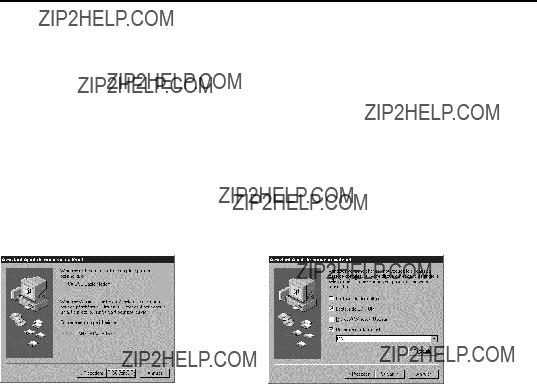
Raccordement du modem c??ble
10.La recherche devrait trouver le pilote ?? RCA USB Cable Modem ?? (Fig. 7). Pour confirmer cette s??lection, cliquez sur ?? Suivant ?? pour continuer et passez ?? l?????tape 12. Autrement, voyez l?????tape 11.
Important : ARR??TEZ si la recherche trouve le pilote ?? P??riph??rique USB mixte ?? (USB Composite Device). Passez ?? l?????tape 11.
11.Suivez ces instructions uniquement si le pilote trouv?? n???est PAS ?? RCA ou Thomson USB Cable Modem ??.
A.Cliquez sur ?? Pr??c??dent ?? pour revenir ?? la fen??tre pr??c??dente.
B.
C.En plus de l???option
D.Dans la fen??tre de s??lection, tapez l???adresse de votre lecteur
E.Cliquez sur ?? Suivant ?? pour continuer.
La recherche devrait trouver le pilote ?? RCA ou Thomson USB Cable Modem ??.
F.Confirmez la s??lection de ce pilote et cliquez sur ?? Suivant ?? pour continuer.
(suite ?? la page suivante)
11
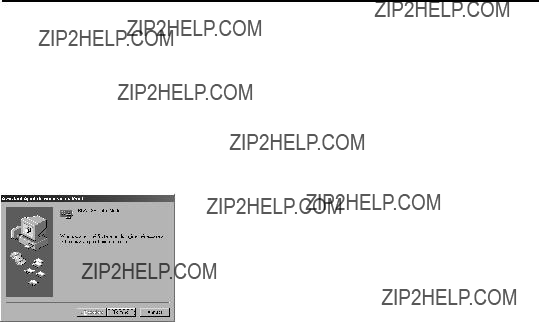
Raccordement du modem c??ble
12.Windows devrait maintenant vous inviter ?? installer le pilote ?? RCA ou Thomson USB Cable Modem ??. Cliquez sur ?? Suivant ?? pour installer le pilote.
?? ce
13.Une fois les fichiers Windows copi??s, le syst??me vous demandera
14.Windows vous informe que l???installation est termin??e. Cliquez sur ?? Terminer ?? pour compl??ter le processus (Fig. 9). Lorsque la fen??tre ?? Modification des param??tres syst??me ?? appara??t, cliquez sur ?? Oui ?? pour red??marrer votre ordinateur.
Fig. 9
12

Raccordement du modem c??ble
15.L???installation du modem c??ble est maintenant termin??e. Pour valider l???installation, suivez les instructions
A.Cliquez sur le bouton ?? D??marrer ?? dans le coin inf??rieur gauche de votre ??cran.
B.S??lectionnez ?? Param??tres ??, puis ?? Panneau de configuration ??. La fen??tre ?? Panneau de configuration ?? appara??t.
C.
D.Trouvez dans la liste ?? Cartes r??seau ??.
Si ?? RCA ou Thomson USB Cable Modem ?? ne s???y trouve pas, le modem c??ble N???EST PAS install?? correctement; voyez la Solution 2 ?? la page 35.
13

Raccordement du modem c??ble
Utilisation de Windows 2000 pour la connexion USB
Suivez les ??tapes 6 ?? 14 si vous avez un syst??me d???exploitation Windows 2000 :
6.Lorsque la fen??tre ?? Assistant Nouveau mat??riel d??tect?? ?? appara??t, cliquez sur ?? Suivant ?? pour rechercher des pilotes pour votre appareil USB (Fig. 10).
Nota : Si Windows 2000 ne d??tecte pas la pr??sence du modem c??ble, vos param??tres BIOS n???acceptent probablement pas les p??riph??riques USB et (ou)
7.S??lectionnez l???option ?? Rechercher un pilote appropri?? pour mon p??riph??rique (recommand??) ?? et cliquez sur ?? Suivant ?? (Fig. 11).
8.S??lectionnez UNIQUEMENT l???option ?? Lecteur
Fig. 12
14
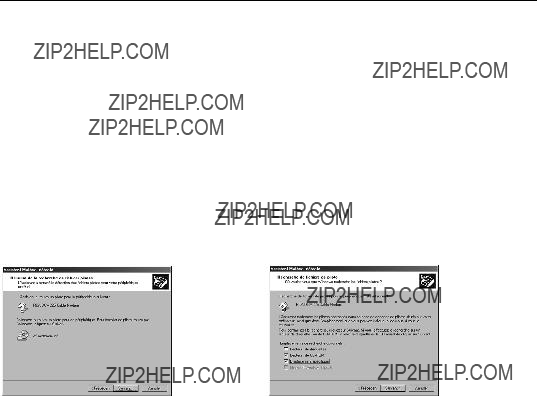
Raccordement du modem c??ble
9.La recherche devrait trouver le pilote ?? RCA ou Thomson DCM 2xx Cable Modem ?? (Fig. 13). Pour confirmer cette s??lection, cliquez sur ?? Suivant ?? pour continuer et passez ?? l?????tape 11. Autrement, voyez l?????tape 10.
Important : ARR??TEZ si la recherche trouve le pilote ?? P??riph??rique USB mixte ?? (USB Composite Device). Passez ?? l?????tape 10.
10.Suivez ces instructions UNIQUEMENT si le pilote trouv?? n???est PAS ?? RCA ou Thomson DCM 2xx Cable Modem ??.
A.Cliquez sur ?? Pr??c??dent ?? pour revenir ?? la fen??tre pr??c??dente.
B.
C.En plus de l???option
D.Dans la fen??tre de s??lection, tapez l???adresse de votre lecteur
E.Cliquez sur ?? Suivant ?? pour continuer.
La recherche devrait trouver ?? RCA ou Thomson USB Cable Modem ?? ou ?? RCA ou Thomson DCM 2xx Cable Modem ??.
(suite ?? la page suivante)
15

Raccordement du modem c??ble
11.Windows devrait maintenant vous inviter ?? installer le pilote ?? RCA ou Thomson USB Cable Modem ?? ou ?? RCA ou Thomson DCM 2xx Cable Modem ??. Cliquez sur ?? Suivant ?? pour installer le pilote.
?? ce
12.Une fois les fichiers Windows copi??s, le syst??me vous demandera
13.Cliquez sur ?? Terminer ?? pour compl??ter le processus (Fig. 15).
Fig. 15
16

Raccordement du modem c??ble
14.L???installation du modem c??ble est maintenant termin??e. Pour valider l???installation, suivez les instructions
A.Cliquez sur le bouton ?? D??marrer ?? dans le coin inf??rieur gauche de votre ??cran.
B.S??lectionnez ?? Param??tres ??, puis ?? Panneau de configuration ??. La fen??tre ?? Panneau de configuration ?? appara??t.
C.
D.Trouvez dans la liste ?? Cartes r??seau ??.
La carte r??seau ?? RCA ou Thomson USB Cable Modem ?? devrait s???y trouver. Si la carte r??seau ?? RCA ou Thomson USB Cable Modem ?? ne s???y trouve pas, le modem c??ble N???EST PAS install?? correctement. Voyez la solution 2 ?? la page 35.
17

Raccordement du modem c??ble
Utilisation de Windows ME pour la connexion USB
Suivez les ??tapes 6 ?? 9 si vous avez un syst??me d???exploitation Windows ME :
6.Windows ME affiche bri??vement ?? Assistant Nouveau mat??riel trouv?? ?? et passe automatiquement ?? ?? Assistant ajout de nouveau mat??riel ?? (Fig. 16).
S??lectionnez l???option ?? Rechercher automat. un meilleur pilote (recommand??) ?? et cliquez sur ?? Suivant ??.
Nota : Si Windows ME ne d??tecte pas la pr??sence du modem c??ble, ?? savoir que la fen??tre ?? Assistant Ajout de nouveau mat??riel ?? ne s???affiche pas automatiquement, vos param??tres BIOS n???acceptent probablement pas les p??riph??riques USB et (ou)
7.La recherche automatique devrait trouver et installer le pilote ?? RCA ou Thomson USB Cable Modem ?? (Fig. 17). Cliquez ?? Terminer ?? pour compl??ter l???installation.
8.Lorsque la fen??tre ?? Modification des param??tres syst??me ?? appara??t, cliquez sur ?? Oui ?? pour red??marrer votre ordinateur (Fig. 18).
Fig. 18
18

Raccordement du modem c??ble
9.L???installation du modem c??ble Thomson est maintenant termin??e. Pour valider l???installation, suivez les instructions
???Cliquez sur le bouton ?? D??marrer ?? dans le coin inf??rieur gauche de votre ??cran.
???S??lectionnez ?? Param??tres ??, puis ?? Panneau de configuration ??. La fen??tre ?? Panneau de configuration ?? appara??t.
???
???Trouvez dans la liste ?? Cartes r??seau ??.
???La carte r??seau ?? RCA ou Thomson USB Cable Modem ?? devrait s???y trouver. Si la carte r??seau ?? RCA ou Thomson USB Cable Modem ?? ne s???y trouve pas, le modem c??ble N???EST PAS install?? correctement. Voyez la solution 2 ?? la page 35.
19

Raccordement du modem c??ble
Utilisation de Windows XP pour la connexion USB
Suivez les ??tapes 6 ?? 9 si vous avez un syst??me d???exploitation Windows XP :
6.Windows XP affiche bri??vement ?? Bienvenue ?? l???Assistant de nouveau mat??riel trouv?? ??, (Fig. 19) et vous demande d???ins??rer le
S??lectionnez l???option ?? Installer le logiciel automatiquement (Recommand??) ?? et cliquez sur ?? Suivant ??.
Nota : Si Windows XP ne d??tecte pas la pr??sence du modem c??ble,
7.Votre ordinateur va installer les pilotes pour ?? RCA ou Thomson USB Cable Modem ?? (Fig. 20). Cliquez sur ?? Suivant ?? pour compl??ter l???installation.
20

Raccordement du modem c??ble
8.Lorsque la fen??tre ?? Fin de l???Assistant de nouveau mat??riel trouv?? ?? appara??t, cliquez sur ?? Terminer ?? pour terminer la proc??dure (Fig. 21).
9.L???installation du modem c??ble Thomson est maintenant termin??e. Pour valider l???installation, suivez les instructions
???Cliquez sur le bouton ?? D??marrer ?? dans le coin inf??rieur gauche de votre ??cran.
???S??lectionnez ?? Param??tres ??, puis ?? Panneau de configuration ??. La fen??tre ?? Panneau de configuration ?? appara??t.
???
???Trouvez dans la liste ?? Cartes r??seau ??.
???La carte r??seau ?? RCA ou Thomson USB Cable Modem ?? devrait s???y trouver. Si la carte r??seau ?? RCA ou Thomson USB Cable Modem ?? ne s???y trouve pas, le modem c??ble N???EST PAS install?? correctement. Voyez la solution 2 ?? la page 35.
Fig. 21
21
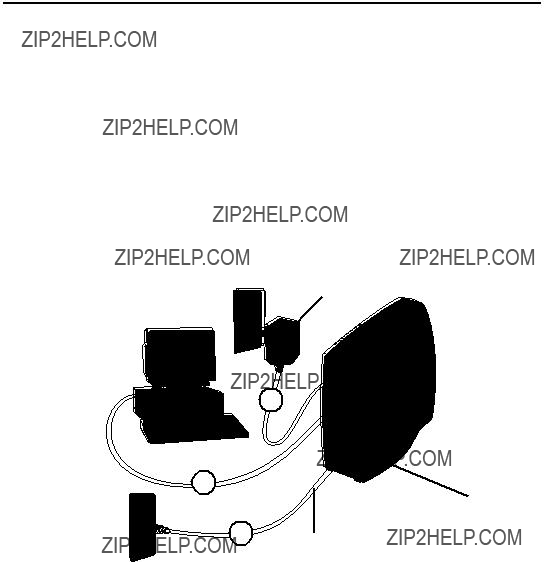
Raccordement du modem c??ble
Connexion Ethernet ?? un seul ordinateur
Effectuez les connexions au modem dans l???ordre suivant (Fig. 22) :
1.Branchez une extr??mit?? du c??ble coaxial ?? la prise c??ble murale et l???autre extr??mit?? au connecteur du modem identifi?? ?? CABLE ??.
2.Ins??rez la fiche du bloc d???alimentation secteur (c.a.) dans la prise c.a. du modem c??ble et la fiche ?? deux broches dans la prise de courant c.a.
Nota : Utilisez seulement le bloc d???alimentation fourni avec cet appareil. L???utilisation d???autres transformateurs pourrait endommager l???appareil.
3.Raccordez une extr??mit?? du c??ble Ethernet (raccordement direct, voir
Bloc d???alimentation
2
9V D C
8 00 m A
RESET
ETHERNET
USB
3
Prise CABLE
1C??ble coaxial
Fig. 22 : Connexion Ethernet
22

Raccordement du modem c??ble
Connexion de plus de deux ordinateurs au modem c??ble (si support?? par le c??blodistributeur)
Si vous voulez connecter plus de deux ordinateurs ou si vous devez connecter deux ordinateurs, mais que l???option USB n???est pas disponible, vous aurez besoin du mat??riel suppl??mentaire suivant :
???C??ble Ethernet crois??, ou ?? null modem ??, de cat??gorie 5, pour le modem c??ble ?? connecter au concentrateur (hub)
???Commutateur ou concentrateur 10BaseT ou 100BaseT
???C??ble Ethernet direct, ou standard, de cat??gorie 5 (un pour chaque ordinateur ?? connecter)
Si vous avez un concentrateur (hub) avec un port de liaison montante*, vous pouvez utiliser un c??ble direct en combinaison avec ce port au lieu du c??ble crois??.
C??ble crois?? (non fourni)

 Concentrateur
Concentrateur
(hub) Ethernet
C??bles Ethernet standard (un fourni)
Fig. 23 : Connexion du concentrateur (hub) Ethernet
*Un port ?? liaison montante est muni d???un petit commutateur permettant de changer la polarit?? de la connexion. Il peut accepter un c??ble crois?? ou un c??ble direct, selon le r??glage.
23

Activation du modem c??ble
Mode d???initialisation
Une fois que vous avez install?? le modem c??ble et que vous l???allumez pour la premi??re fois (et ?? chaque fois que le modem est rebranch?? au secteur), il passe par cinq ??tapes avant de pouvoir ??tre utilis??. Chacune de ces ??tapes est repr??sent??e par une configuration diff??rente des voyants clignotants sur
la fa??ade du modem.
Nota : Tous les voyants clignotent une fois avant la s??quence d???initialisation.
X

X

2.Exploration ??? Le modem est maintenant syntonis?? sur un canal descendant pour modem c??ble et peut recevoir des donn??es. Il cherche maintenant un canal ascendant pour pouvoir envoyer des donn??es.
X

X

X

3.Connexion ??? Le modem c??ble communique des donn??es de mise en route, ?? la fois sur le canal descendant et sur le canal ascendant.
Le c??blodistributeur ??tablit une connexion IP avec votre modem.
X

X

X

X

4.Configuration ??? Le modem c??ble a re??u son adresse IP et t??l??charge son fichier de configuration aupr??s du fournisseur de service Internet (FSI).
X

X

X

X

X

5.Enregistrement ??? La configuration du modem c??ble est termin??e. Il enregistre ses r??glages de ?? configuration ?? aupr??s de votre c??blodistributeur. Une fois termin??, les indicateurs POWER
(INTERNET)*, PC LINK et CABLE (CABLE LINK)* cessent de clignoter et restent allum??s.
*Les noms des boutons ou D??Ls peuvent varier selon les mod??les.
24

Informations suppl??mentaires
Boutons
ON/OFF (Marche/arr??t) ??? Place la connexion Internet ?? MARCHE ou ARR??T, pour plus de s??curit??. En mode ARR??T, le VOYANT D???ACTIVIT?? DU C??BLE est ??galement d??sactiv??.
Important : N???appuyez pas sur ce bouton lorsque vous transmettez des donn??es sur Internet. Les informations seront perdues et votre connexion Internet sera coup??e.
Voyants lumineux - Mode op??rationnel
POWER (INTERNET)* ??? Indique si la connexion ?? Internet est active.
PC LINK (Liaison PC) ??? Indique si la connexion entre l???ordinateur et le modem est active (pr??te ?? transmettre/recevoir) ou transmet/re??oit actuellement. Le voyant est ??teint si aucune porteuse n???est pr??sente (ou si le modem est en mode de veille) et allum?? si la porteuse est pr??sente, mais que le modem ne transmet ni ne re??oit, et clignote lorsqu???il y a transmission/r??ception.
CABLE (CABLE LINK)* ??? Indique l?????tat de votre connexion c??ble. Le voyant est ??teint lorsque aucune connexion c??ble n???est d??tect??e et compl??tement allum?? lorsque le modem a ??tabli une connexion avec le r??seau et que des donn??es peuvent ??tre envoy??es.
ACTIVITY (CABLE ACTIVITY)* ??? Indique l???existence d???un trafic de donn??es sur le c??ble. Le voyant est ??teint lorsqu???il n???y a aucun trafic de donn??es et clignotant lorsqu???il y a une activit?? de donn??es.
EMAIL (MESSAGE)* ??? Ce voyant s???allume lorsque vous avez des courriels
Nota : Si tous les voyants clignotent successivement, cela signifie que le modem c??ble proc??de ?? une mise ?? jour automatique de son logiciel syst??me. Veuillez attendre que les voyants cessent de clignoter. Vous ne pouvez utiliser votre modem pendant cette p??riode. Ne coupez pas l???alimentation et ne r??initialisez pas le modem c??ble au cours de ce processus.
*Les noms des boutons ou D??Ls peuvent varier selon les mod??les
25
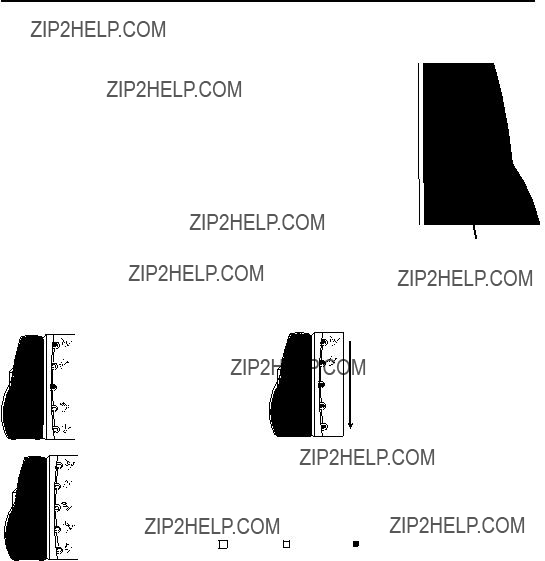
Utilisation du modem c??ble
Interrupteur de r??initialisation
L???interrupteur de r??initialisation se trouve derri??re un ?? trou de
???R??initialisation de base ??? Enfoncez et rel??chez l???interrupteur pour lui faire remplir la m??me fonction qu???une mise hors tension du modem.
Il red??marrera en mode d???initialisation, voir la page 24.
???R??initialisation usine ??? D??branchez le modem de l???alimentation secteur. Maintenez enfonc?? le bouton de r??initialisation, tout en branchant le modem au secteur. Continuez ?? maintenir l???interrupteur enfonc??. Rel??chez l???interrupteur lorsque tous les voyants s???allument (environ 6 secondes). Cela remettra le modem ?? sa ?? configuration d???usine ??. Ce type de reconfiguration est n??cessaire uniquement si le modem c??ble a ??t?? mis hors service ?? un endroit et est reconnect?? ?? un service diff??rent, ou si vous ??tes invit?? ?? le faire par votre c??blodistributeur.
USB ETHERNET RESET 800mA C
Interrupteur de r??initialisation
Autres indicateurs d?????tat
Voici trois autres configurations de voyants d?????tat possibles :
D??sactiv?? ??? Le c??blodistributeur a d??sactiv?? le modem c??ble.
Le voyant du c??ble clignote lentement.
X

X

X

X

Tous les voyants sont ??teints. Le modem c??ble est en mode de s??curit??.
*Les noms des boutons ou D??Ls peuvent varier selon les mod??les.
26

Questions fr??quemment pos??es
Questions fr??quemment pos??es
Q.Et si je n???ai pas d???abonnement de t??l??vision par c??ble?
R.Si la t??l??vision par c??ble est disponible dans votre r??gion, le service de donn??es peut ??tre disponible avec ou sans service de c??blodistribution pour la t??l??vision. Contactez votre c??blodistributeur local pour obtenir des informations compl??tes sur les services par c??ble, y compris l???acc??s haut d??bit ?? Internet.
Q.Comment installer le syst??me?
R.Une installation professionnelle fournie par votre c??blodistributeur est fortement recommand??e. Il assurera une bonne connexion du c??ble au modem et ?? votre ordinateur. Cependant, votre revendeur peut offrir un n??cessaire d???installation, y compris le logiciel n??cessaire pour communiquer avec votre c??blodistributeur local.
Q.Une fois que mon modem c??ble est connect??, comment
R.Votre c??blodistributeur local fournit votre acc??s Internet*, offrant une large gamme de services comprenant notamment des services de courrier ??lectronique, groupes de discussion, actualit??s, informations et une connexion au World Wide Web.
Q.
R.Tout ?? fait! Et votre ligne t??l??phonique ne sera pas occup??e pendant que vous ??tes en ligne.
Q.
R.Oui - un seul modem c??ble peut accepter jusqu????? 32 ordinateurs via des connexions Ethernet.**
Q.Que signifie ?? large bande ???
R.Tout simplement, cela signifie que vous recevrez des informations par l???interm??diaire d???une
?? plus grosse conduite ??, avec une bande passante plus large que celle que peut offrir une ligne t??l??phonique standard. Une bande plus ?? large ?? se traduit par plus de donn??es, plus rapidement.
* Moyennant un tarif mensuel.
**Du mat??riel suppl??mentaire est n??cessaire. Demandez ?? votre c??blodistributeur et ?? votre FSI s???il y a des restrictions ou des frais suppl??mentaires.
(suite ?? la page suivante)
27

Questions fr??quemment pos??es
Q.
R.?? Data Over Cable Service Interface Specifications ?? (?? Sp??cifications d???interface pour service de donn??es par c??ble ??) est la norme industrielle qu???adoptent la plupart des c??blodistributeurs ?? mesure qu???ils proc??dent ?? la mise ?? niveau de leurs syst??mes.Si vous d??cidez de d??m??nager, le modem c??ble
Q.
R.EuroDOCSIS est une norme DOCSIS modifi??e compatible avec les r??seaux c??bl??s europ??ens et plus g??n??ralement avec les r??seaux c??bl??s ?? espacement des voies de 8 MHz.
*Si les fr??quences DOCSIS du canal descendant correspondent ?? la plage de fr??quences EuroDOCSIS.
28

D??pannage g??n??ral
D??pannage g??n??ral
Je ne parviens pas ?? acc??der ?? Internet ou ?? ma messagerie ??lectronique.
???V??rifiez toutes les connexions ?? votre modem c??ble.
???Il est possible que votre carte Ethernet ou votre port USB ne fonctionne pas. V??rifiez la documentation de chaque produit pour obtenir plus d???informations.
???Les propri??t??s r??seau de votre syst??me d???exploitation pourraient ne pas ??tre install??es correctement ou les param??tres pourraient ??tre incorrects. Consultez votre FSI ou votre c??blodistributeur.
Rien ne se passe lorsque j???appuie sur le bouton marche/arr??t.
???
???
???V??rifiez que la prise secteur que vous utilisez n???est pas contr??l??e par un interrupteur qui est ??teint.
Tous les voyants clignotent successivement.
???Cela signifie que le modem c??ble proc??de ?? une mise ?? jour automatique de son logiciel syst??me. Veuillez attendre que les voyants cessent de clignoter. Le processus de mise ?? jour dure g??n??ralement moins d???une minute.
???Ne coupez pas l???alimentation et ne r??initialisez pas le modem c??ble au cours de ce processus.
Le voyant identifi?? EMAIL (MESSAGE)* clignote (si disponible).
???Ceci signifie que vous avez un nouveau message ??lectronique ou un message provenant de votre c??blodistributeur.
*Les noms des boutons ou D??Ls peuvent varier selon les mod??les.
29

D??pannage g??n??ral
Je n???arrive pas ?? ??tablir une connexion Ethernet avec le modem.
???M??me les nouveaux ordinateurs ne disposent pas tous des fonctions Ethernet ??? v??rifiez que votre ordinateur a une carte Ethernet et un logiciel de pilote Ethernet correctement install??s.
???V??rifiez que vous utilisez le type appropri?? de c??ble Ethernet (voir page 22).
Le modem ne parvient pas ?? ??tablir une connexion par l???interm??diaire du c??ble (le voyant ?? Cable ?? ne reste pas allum?? en permanence).
???Si le modem est en mode d???initialisation, le voyant ?? Power ?? doit clignoter. Appelez votre c??blodistributeur s???il n???a pas termin?? la proc??dure ?? cinq ??tapes au bout de 30 minutes, et notez l?????tape sur laquelle il bloque. (Voir la page 24 pour plus de d??tails.)
???Le modem devrait fonctionner avec un c??ble coaxial
???Si vous ??tes abonn?? au service vid??o par le c??ble, il est possible que le signal du c??ble n???atteigne pas le modem. V??rifiez que vous recevez des images de t??l??vision de bonne qualit?? au niveau du connecteur coaxial que vous utilisez en y connectant un t??l??viseur. Si votre prise de c??ble est
?? morte ??, appelez votre c??blodistributeur.
30
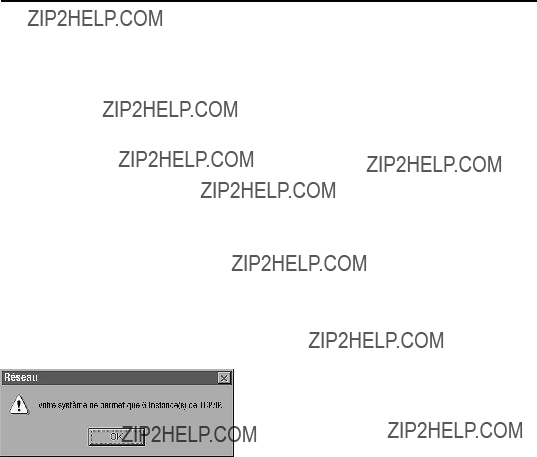
D??pannage USB
D??pannage d???installation USB
Cette section a pour but d???aider les utilisateurs qui ont suivi les instructions du Guide d???installation, mais qui ont encore des probl??mes avec leur installation USB.
Sympt??mes
???Un message d???erreur r??seau appara??t pendant l???installation, voir
???Le modem c??ble ne transf??re pas les donn??es
???Le modem c??ble cesse de transf??rer les donn??es, allez ?? la page 39.
???Windows est lent ?? r??pondre lorsque le c??ble USB est connect??, allez ?? la page 39.
???Windows est lent ?? r??pondre apr??s le red??marrage, allez ?? la page 39.
???Le sablier reste affich?? pendant plusieurs minutes, allez ?? la page 39.
???Un message d???erreur r??seau est affich??, allez ?? la page 39.
???L???installation du modem c??ble RCA est r??ussie. Une fois le modem c??ble install??, vous devez installer ou mettre ?? jour le logiciel du fournisseur de service Internet (AOL par ex.). Le modem c??ble ne fonctionne plus correctement. (Windows 98 SE seulement), allez ?? la page 40.
Sympt??me 1 :
Un message d???erreur r??seau appara??t pendant l???installation
Un message d???erreur r??seau appara??t si un trop grand nombre de p??riph??riques r??seau sont install??s dans votre syst??me. Ce message pourrait ressembler ?? celui de la figure 1 (D??p. Fig. 1)
D??p. Fig. 1
31
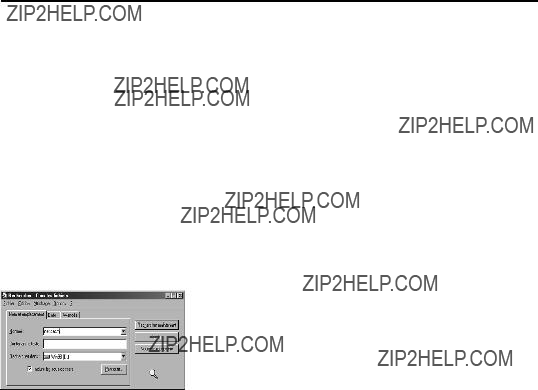
D??pannage USB
Solution 1 :
Dans cette situation, le modem c??ble n???est pas install?? correctement. Par cons??quent, vous devez :
A.D??sinstaller le modem c??ble USB.
B.Supprimer une autre carte r??seau pour lib??rer un espace dans votre ordinateur pour le modem c??ble USB.
C.R??installer le modem c??ble USB.
1A. D??sinstaller le modem c??ble USB.
Windows 98 SE
1)Supprimez la carte r??seau ?? RCA ou Thomson USB Cable Modem ?? en suivant les instructions de Windows 98 SE indiqu??es dans la Solution 1B, Suppression d???une autre carte r??seau, ?? la page 34.
2)Supprimez les fichiers ?? netrcacm.sys ?? et ?? netrcacm.inf ??.
a)Cliquez avec le bouton gauche sur le bouton ?? D??marrer ?? dans le coin inf??rieur gauche de votre ??cran.
b)S??lectionnez ?? Rechercher ??, puis ?? Fichiers ou dossiers??? ??. La fen??tre ?? Rechercher : Tous les fichiers ?? (D??p. Fig. 2) appara??t.
D??p. Fig. 2
c)Dans la bo??te ?? Nomm?? : ?? tapez ?? netrcacm ??. Dans la bo??te ?? Rechercher dans : ??, utilisez le menu d??roulant pour s??lectionner votre disque dur local (p. ex. ?? C:\ ??).
d)Cochez la case ?? Inclure les
e)S??lectionnez les deux fichiers et cliquez sur ?? Supprimer ??.
f)La fen??tre ?? Confirmation de la suppression des fichiers ?? appara??t. Cliquez sur ?? Oui ?? pour confirmer la suppression des deux fichiers.
g)Fermez toutes les fen??tres ouvertes.
32

D??pannage USB
Windows 2000
1)Supprimez la carte r??seau ?? RCA ou Thomson USB Cable Modem ?? en suivant les instructions de Windows 2000 indiqu??es dans la Solution 1B, Suppression d???une autre carte r??seau, ?? la page 34.
2)Supprimez le fichier ?? netrcacm.sys ??.
a)Cliquez avec le bouton gauche sur le bouton ?? D??marrer ?? dans le coin inf??rieur gauche de votre ??cran.
b)S??lectionnez ?? Rechercher ??, puis ?? Fichiers ou dossiers??? ??. La fen??tre ?? R??sultats de recherche ?? appara??t. Elle peut ressembler ?? l???une des fen??tres
c)Dans la bo??te ?? Contenant le texte : ??, tapez ?? netrcacm ??. Dans la bo??te ?? Rechercher dans : ??, utilisez le menu d??roulant pour s??lectionner votre disque dur local (p. ex. ?? C:\ ?? et cliquez sur ?? Rechercher maintenant ??.
La recherche devrait trouver le fichier ?? netrcacm.sys ??.
d)S??lectionnez le fichier et appuyez sur ?? Suppr. ?? (Delete).
e)La fen??tre ?? Confirmation de la suppression des fichiers ?? appara??t. Cliquez sur ?? Oui ?? pour confirmer la suppression de ce fichier.
f)Fermez toutes les fen??tres ouvertes.
3)Supprimez le fichier ?? .inf ?? appropri??.
Nota : Sous Windows 2000, le nom du fichier ?? .inf ?? pourrait ??tre diff??rent.
a)Cliquez avec le bouton gauche sur le bouton ?? D??marrer ?? dans le coin inf??rieur gauche de votre ??cran.
b)S??lectionnez ?? Rechercher ??, puis ?? Fichiers ou dossiers??? ??. La fen??tre ?? R??sultats de recherche ?? appara??t.
D??p. Fig. 3
33

D??pannage USB
c)Dans la bo??te ?? Rechercher les fichiers ou dossiers nomm??s : ??, tapez ?? oem?.* oem??.* ??.
Dans la bo??te ?? Rechercher dans : ??, utilisez le menu d??roulant pour s??lectionner votre disque dur local (p. ex. ?? C:\ ??). Cliquez sur ?? Rechercher maintenant ??.
d)La recherche devrait trouver plusieurs fichiers ?? oem ?? (p. ex. oem0.inf, oem0.pnf, oem2.inf. etc.).
e)S??lectionnez, l???un apr??s l???autre, chaque fichier ?? oemX.inf ??.
f)Fermez ce fichier. S??lectionnez son nom et appuyez sur la touche ?? Suppr. ?? (Delete) de votre clavier (p. ex. ?? oem2.inf ??). La fen??tre ?? Confirmation de la suppression du fichier ?? appara??t. Cliquez sur ?? Oui pour tout ??.
g)En plus du fichier ?? .inf ??, s??lectionnez le fichier ?? .pnf ?? correspondant et appuyez sur la touche ?? Suppr. ?? (Delete) de votre clavier (p. ex. ?? oem2.pnf ??). La fen??tre ?? Confirmation de la suppression du fichier ?? appara??t. Cliquez sur ?? Oui pour tout ??.
h)Fermez toutes les fen??tres ouvertes.
1B. Suppression d???une autre carte r??seau.
Windows 98 SE
1)Cliquez avec le bouton gauche sur le bouton ?? D??marrer ?? dans le coin inf??rieur gauche de votre ??cran.
2)S??lectionnez ?? Param??tres ??, puis ?? Panneau de configuration ??. La fen??tre ?? Panneau de configuration ?? appara??t.
3)
4)Faites d??filer la liste et s??lectionnez la (les) carte(s) r??seau que vous voulez supprimer. Cliquez sur le bouton ?? Supprimer ??. C???est ?? vous de d??cider quelles cartes r??seau sont ?? supprimer.
Nota : Les cartes r??seau sont identifi??es dans la bo??te de description lorsque vous faites d??filer la liste vers le bas.
5)La fen??tre ?? Modification des param??tres syst??me ?? appara??t. Cliquez sur ?? Oui ?? pour red??marrer votre ordinateur.
Windows 2000
1)Cliquez avec le bouton gauche sur le bouton ?? D??marrer ?? dans le coin inf??rieur gauche de votre ??cran.
2)S??lectionnez ?? Param??tres ??, puis ?? Panneau de configuration ??. La fen??tre ?? Panneau de configuration ?? appara??t.
34

D??pannage USB
3)
4)Trouvez ?? Cartes r??seau ?? dans la liste.
5)Mettez en surbrillance la (les) carte(s) r??seau que vous voulez supprimer et cliquez sur l???onglet ?? Action ??, situ?? dans le coin sup??rieur gauche de la fen??tre. S??lectionnez ?? D??sinstaller ??. C???est ?? vous de d??cider quelles cartes r??seau sont ?? supprimer.
6)La fen??tre ?? Confirmation de la suppression du p??riph??rique ?? appara??t.
1C. R??installation du modem c??ble.
R??installez le modem c??ble en suivant les instructions ?? la page 9.
Sympt??me 2 :
Le modem c??ble ne transf??re pas les donn??es.
Vous avez termin?? l???installation du modem c??ble, mais il ne transf??re pas les donn??es
Solution 2 :
Dans cette situation, le modem c??ble ne transf??re pas les donn??es. Par cons??quent, vous devez :
A.Valider l???installation.
B.Effectuer un test afin de d??terminer si le protocole DHCP (configuration dynamique de l???h??te) du c??blodistributeur est correct si la carte r??seau ?? RCA ou Thomson USB Cable Modem ?? existe.
C.V??rifiez que la carte r??seau de votre modem c??ble RCA ou Thomson est activ??e.
D.Si les solutions A, B et C restent sans effet, d??sinstallez le modem c??ble USB.
2A. Valider l???installation.
Windows 98 SE
1)Cliquez sur le bouton ?? D??marrer ?? dans le coin inf??rieur gauche de votre ??cran.
2)S??lectionnez ?? Param??tres ??, puis ?? Panneau de configuration ??. La fen??tre ?? Panneau de configuration ?? appara??t.
35

D??pannage USB
3)
4)Trouvez dans la liste ?? Cartes r??seau ??.
La carte r??seau ?? RCA ou Thomson USB Cable Modem ?? devrait s???y trouver. Si la carte r??seau ?? RCA ou Thomson USB Cable Modem ?? ne s???y trouve pas, le modem c??ble N???EST PAS install?? correctement.
5)Si le modem c??ble n???est pas install?? correctement, d??sinstallez le modem c??ble USB en suivant les instructions indiqu??es dans la Solution 1A, D??sinstaller le modem c??ble USB, de la page 32 et essayez de le r??installer en suivant les directives d???installation USB ?? la page 9.
Windows 2000
1)Cliquez sur le bouton ?? D??marrer ?? dans le coin inf??rieur gauche de votre ??cran.
2)S??lectionnez ?? Param??tres ??, puis ?? Panneau de configuration ??. La fen??tre ?? Panneau de configuration ?? appara??t.
3)
4)Trouvez dans la liste ?? Cartes r??seau ??.
La carte r??seau ?? RCA USB Cable Modem ?? devrait s???y trouver. Si la carte r??seau ?? RCA ou Thomson USB Cable Modem ?? ne s???y trouve pas, le modem c??ble N???EST PAS install?? correctement.
5)Si le modem c??ble n???est pas install?? correctement, d??sinstallez le modem c??ble en suivant les instructions indiqu??es dans la Solution 1A, D??sinstaller le modem c??ble USB, de la page 32 et essayez de le r??installer en suivant les directives d???installation USB ?? la page 9.
2B. Effectuez un test afin de d??terminer si le protocole DHCP (configuration dynamique de l???h??te) du c??blodistributeur est correct si la carte r??seau ?? RCA ou Thomson USB Cable Modem ?? existe.
Windows 98 SE
Vous pouvez effectuer un test appel?? ?? Winipcfg ?? pour d??terminer s???il s???agit de la cause du probl??me. Veuillez suivre les instructions
36

D??pannage USB
1)Cliquez avec le bouton gauche sur le bouton ?? D??marrer ?? dans le coin inf??rieur gauche de votre ??cran.
2)S??lectionnez ?? Ex??cuter??? ??.
3)La fen??tre ?? Ex??cuter ?? appara??t. Tapez ?? winipcfg ?? dans la bo??te de texte et cliquez sur le bouton ?? OK ??.
4)La fen??tre ?? Configuration IP ?? appara??t. Utilisez la liste d??roulante pour s??lectionner ?? RCA ou Thomson Digital Cable Modem ??.
5)Une liste d???adresses devrait appara??tre. Trouvez l???adresse IP. Si les trois premiers chiffres de l???adresse IP sont ?? 169 ??, votre protocole DHCP a ??chou??. Veuillez contacter votre fournisseur de service Internet (ISP) et vous assurer qu???il a configur?? correctement votre compte en fonction de votre modem c??ble num??rique, y compris le num??ro de s??rie et l???adresse MAC.
6)Une fois que l???erreur de configuration IP est corrig??e, vous devez d??connecter le c??ble USB et le reconnecter.
Windows 2000
Vous pouvez effectuer un test appel?? ?? ipconfig / all ?? pour d??terminer s???il s???agit de la cause du probl??me. Veuillez suivre les instructions
1)Cliquez avec le bouton gauche sur le bouton ?? D??marrer ?? dans le coin inf??rieur gauche de votre ??cran.
2)S??lectionnez ?? Ex??cuter??? ??. La fen??tre Ex??cuter appara??t.
3)Tapez ?? cmd ?? dans la bo??te de texte et cliquez sur le bouton ?? OK ??.
4)La fen??tre ?? Commande ?? appara??t. Tapez ?? ipconfig /all ??. Une liste de toutes vos cartes appara??t.
5)Trouvez la carte r??seau du modem c??ble et son adresse IP. Si les trois premiers chiffres de l???adresse IP sont ?? 169 ??, votre protocole DHCP a ??chou??. Veuillez contacter votre fournisseur de service Internet (ISP) et vous assurer qu???il a configur?? correctement votre compte en fonction de votre modem c??ble num??rique, y compris le num??ro de s??rie et l???adresse MAC.
6)Une fois que l???erreur de configuration IP est corrig??e, vous devez d??connecter le c??ble USB et le reconnecter.
37

D??pannage USB
2C. V??rifiez que la carte r??seau de votre modem c??ble est activ??e dans votre ordinateur.
Ceci peut poser probl??me si vous avez une autre carte r??seau install??e et activ??e dans votre ordinateur. Pour d??sactiver les autres cartes r??seau, suivez les instructions
Windows 98 SE
1)Cliquez avec le bouton gauche sur le bouton ?? D??marrer ?? dans le coin inf??rieur gauche de votre ??cran.
2)S??lectionnez ?? Param??tres ??, puis ?? Panneau de configuration ??. La fen??tre ?? Panneau de configuration ?? appara??t.
3)
4)Trouvez dans la liste ?? Cartes r??seau ??.
5)S??lectionnez la (les) carte(s) r??seau que vous voulez d??sactiver et
6)La fen??tre de la carte r??seau s??lectionn??e appara??t. Cochez la case ?? D??sactiver dans ce profil mat??riel ?? pour d??sactiver la carte r??seau et cliquez sur ?? OK ??.
7)Fermez toutes les fen??tres ouvertes.
Windows 2000
1)Cliquez avec le bouton gauche sur le bouton ?? D??marrer ?? dans le coin inf??rieur gauche de votre ??cran.
2)S??lectionnez ?? Param??tres ??, puis ?? Panneau de configuration ??. La fen??tre ?? Panneau de configuration ?? appara??t.
3)
4)Trouvez dans la liste ?? Cartes r??seau ??.
5)S??lectionnez les cartes r??seau (si plus d???une) que vous voulez d??sactiver et
38

D??pannage USB
6)La fen??tre de la carte r??seau s??lectionn??e appara??t. Dans le menu d??roulant, s??lectionnez ?? Ne pas utiliser ce p??riph??rique (D??sactiver) ?? et cliquez sur ?? OK ??.
7)Fermez toutes les fen??tres ouvertes.
2D. Si les solutions A, B et C restent sans effet, d??sinstallez le modem c??ble USB.
D??sinstallez le modem c??ble USB en suivant les instructions fournies dans la Solution 1A, D??sinstaller le modem c??ble USB, ?? la page 32.
Sympt??me 3 :
Le modem c??ble cesse de transf??rer des donn??es.
Le modem c??ble fonctionnait normalement, puis a cess?? brusquement le transfert de donn??es.
Solution 3 :
A)V??rifiez vos c??bles ??? l???un d???eux pourrait ??tre d??connect??, tordu, coup?? ou entortill??.
B)D??branchez le c??ble USB et
Sympt??me 4 :
Windows est lent ?? r??pondre lorsque le c??ble USB est connect??. Windows est lent ?? r??pondre apr??s le red??marrage.
Le sablier reste affich?? pendant plusieurs minutes.
Un message d???erreur r??seau est affich??, tel qu???illustr?? dans la figure
D??s la mise en marche d???une connexion r??seau, Windows essaie d???obtenir une adresse r??seau, appel??e aussi adresse ?? IP ??. Ce processus est d??sign?? sous le nom DHCP (protocole de configuration dynamique de l???h??te) et peut prendre plusieurs minutes. Sous Windows 98 SE, un sablier pourrait appara??tre et le syst??me pourrait ??tre lent ?? r??pondre.
Si le c??ble coaxial n???est pas connect?? ou si le r??seau est en panne, vous pourriez voir un message d???erreur DHCP, tel qu???illustr?? dans D??p. Fig. 4.
39
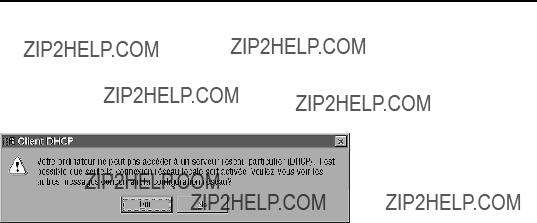
D??pannage USB
Solution 4 :
A.Attendez quelques instants. Le modem c??ble devrait fonctionner correctement une fois la connexion ??tablie.
B.Si apr??s quelques minutes la connexion n???est toujours pas ??tablie, suivez les instructions fournies ?? la Solution 2B, Effectuer un test afin de d??terminer si le protocole DHCP de votre c??blodistri- buteur est correct si ?? RCA ou Thomson USB Cable Modem ?? existe, ?? la page 36 pour d??terminer s???il s???agit d???une erreur DHCP. Ce message peut ressembler au message de D??p., de la figure 4
D??p. Fig. 4
Sympt??me 5 :
L???installation du modem c??ble RCA est r??ussie. Une fois le modem c??ble install??, vous devez installer ou mettre ?? jour le logiciel du fournisseur de service Internet (p. ex. AOL). ?? pr??sent, le modem c??ble ne fonctionne plus correctement (Windows 98 SE seulement).
Le logiciel d???installation de certains fournisseurs de services Internet (FSI) cr??e automatiquement ses propres protocoles TCP/IP et supprime le protocole TCP/IP du modem c??ble Thomson.
Solution 5 :
Pour r??installer les protocoles TCP/IP de votre modem c??ble, suivez les instructions
1)Cliquez sur le bouton ?? D??marrer ?? dans le coin inf??rieur gauche de votre ??cran.
2)S??lectionnez ?? Param??tres ??, puis ?? Panneau de configuration ??. La fen??tre ?? Panneau de configuration ?? appara??t.
3)Cliquez sur l???ic??ne ?? Voisinage r??seau ??.
4)S??lectionnez l???onglet ?? Configuration ??.
5)Trouvez dans la liste ?? RCA ou Thomson Cable Modem ??. Si ?? RCA ou Thomson Cable Modem ?? ne s???y trouve pas, votre modem c??ble n???est pas install?? correctement. Veuillez passer ?? la Solution 1, ?? la page 32.
40

D??pannage USB
6)Les protocoles TCP/IP sont situ??s sous ?? RCA ou Thomson Cable Modem ??. Trouvez dans la liste
??TCP/IP RCA ou Thomson Cable Modem ??.
7)La fen??tre ?? S??lection du type de composant r??seau ?? appara??t. S??lectionnez ?? Protocole ?? et cliquez sur le bouton ?? Ajouter ??.
Une nouvelle fen??tre appara??t avec une fen??tre ?? Constructeurs ?? du c??t?? gauche et une fen??tre
??Protocoles r??seau ?? du c??t?? droit.
8)Dans la fen??tre ?? Constructeurs ??, s??lectionnez ?? Microsoft ??.
9)Dans la fen??tre ?? Protocoles r??seau ??, s??lectionnez ?? TCP/IP ??.
L???ajout du protocole ?? TCP/IP RCA ou Thomson Cable Modem ?? devrait se faire automatiquement.
41
Page laiss??e blanche intentionnellement.

Le bus s??rie universel (USB) est un bus tr??s rapide qui permet ?? l???ordinateur de communiquer simultan??ment avec divers p??riph??riques. Toutefois, si d???autres p??riph??riques envoient et re??oivent beaucoup de donn??es, comme des
???Utilisateurs Mac : L???installation USB n???est actuellement pas possible avec Mac OS ni aucun syst??me d???exploitation autre que Windows 98SE, ME, 2000 ou XP. Veuillez utiliser la connexion Ethernet.
Raccordement du modem c??ble
1.Branchez une extr??mit?? du c??ble coaxial ?? la prise de c??ble murale et l???autre extr??mit?? au connecteur du modem identifi?? ?? CABLE ??.
2.a. Ins??rez la fiche du bloc d???alimentation dans la prise de votre modem c??ble.
b.Branchez le cordon d???alimentation sur le bloc d???alimentation, puis dans une prise de courant secteur.
3.Pour la connexion USB : Branchez une extr??mit?? du c??ble USB sur le port USB situ?? ?? l???arri??re de votre ordinateur et l???autre extr??mit?? sur le port USB du panneau arri??re du modem c??ble. (Voir les instructions de chargement du pilote USB ?? la page 9.)
OU
Pour une connexion Ethernet : Branchez une extr??mit?? du c??ble Ethernet (direct, voir
*Si support?? par le c??blodistributeur.
43
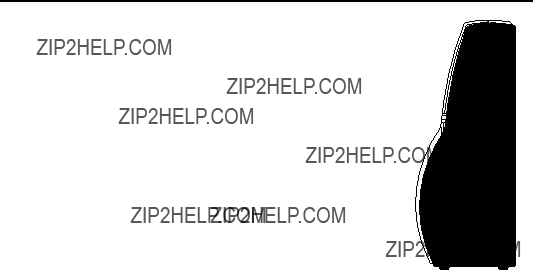
Guide rapide
Boutons
ON/OFF (Marche/arr??t) ??? Place la connexion Internet ?? MARCHE ou ARR??T, pour plus de s??curit??. En mode ARR??T, le VOYANT D???ACTIVIT?? DU C??BLE est ??galement d??sactiv??. N???appuyez pas sur ce bouton lorsque vous transmettez des donn??es sur Internet. Les informations seront perdues et votre connexion sera coup??e.
Voyants lumineux/D??L
POWER (INTERNET)* ??? Indique si la connexion ?? Internet est active.
PC LINK (Liaison PC) ??? Indique si la connexion entre l???ordinateur et le modem est active (pr??te ?? transmettre/recevoir) ou transmet/re??oit actuellement. Le voyant est ??teint si aucune porteuse n???est pr??sente (ou si le modem est en mode de veille) et allum?? si la porteuse est pr??sente, mais que le modem ne transmet ni ne re??oit, et clignote lorsqu???il y a transmission/r??ception.
CABLE (CABLE LINK)* ??? Indique l?????tat de votre connexion c??ble. Le voyant est ??teint lorsque aucune connexion c??ble n???est d??tect??e et compl??tement allum?? lorsque le modem a ??tabli une connexion avec le r??seau et que des donn??es peuvent ??tre envoy??es.
ACTIVITY (CABLE ACTIVITY)* ??? Indique l???existence d???un trafic de donn??es sur le c??ble. Le voyant est ??teint lorsqu???il n???y a aucun trafic de donn??es et clignotant lorsqu???il y a une activit?? de donn??es.
EMAIL (MESSAGE)* ??? Ce voyant s???allume lorsque vous avez des courriels
Service
Si vous avez achet?? ou lou?? votre modem c??ble directement aupr??s de votre c??blodistributeur, il est possible que ce dernier ou son agent autoris?? se charge ??galement de la garantie. Pour obtenir des renseignements sur 1) la souscription d???un abonnement, 2) le service ?? la client??le, 3) les services suppl??mentaires, veuillez contacter votre c??blodistributeur. Si vous avez achet?? votre modem c??ble chez un d??taillant, consultez la garantie
*Les noms des boutons ou D??Ls peuvent varier selon les mod??les
44

Glossaire
10BaseT ??? C??ble ?? paire torsad??e non blind?? muni d???un connecteur
DHCP (Dynamic Host Control Protocol [Protocole de configuration dynamique d???h??te]) ??? Un protocole qui permet ?? un serveur d???allouer de fa??on dynamique des adresses IP ?? des postes de travail ?? la vol??e.
DOCSIS (Data Over Cable Service Interface Specifications [Sp??cifications d???interface pour service de donn??es par c??ble]) ??? Projet ayant pour objectif d?????laborer un ensemble de sp??cifications n??cessaires et de sp??cifications d???interface de soutien aux op??rations pour les modems c??ble et le mat??riel connexe.
Carte Ethernet ??? Une carte circuit enfichable install??e dans une baie d???extension d???un micro- ordinateur. La carte Ethernet (parfois appel??e NIC [Network Interface Card (Carte d???interface de r??seau)]) prend des donn??es parall??les de l???ordinateur, les convertit en donn??es s??rie, les met sous forme de paquets et les envoie par l???interm??diaire du c??ble de r??seau local 10BaseT ou 100BaseT.
EuroDOCSIS est une norme DOCSIS modifi??e compatible avec les r??seaux c??bl??s europ??ens et plus g??n??ralement avec les r??seaux c??bl??s ?? espacement des voies de 8 MHz.
Connecteur F ??? Un type de connecteur coaxial, identifi?? CABLE IN (ENTR??E C??BLE) ?? l???arri??re du modem c??ble, qui connecte le modem au r??seau de c??blodistribution.
HTTP (HyperText Transfer Protocol [Protocole de transfert hypertexte]) ??? Invisible ?? l???utilisateur, le protocole HTTP permet aux serveurs et aux clients de communiquer et d???afficher les donn??es sur un navigateur client.
Concentrateur (hub) ??? Un dispositif utilis?? pour connecter plusieurs ordinateurs au modem c??ble.
Adresse IP ??? Une adresse 32 bits unique affect??e ?? chaque p??riph??rique d???un r??seau. Une adresse IP (Internet Protocol [Protocole Internet]) comporte deux parties : une adresse de r??seau et une adresse d???h??te. Ce modem re??oit une nouvelle adresse IP de votre c??blodistributeur, par l???interm??diaire du protocole DHCP, ?? chaque fois qu???il est en mode d???initialisation.
Adresse MAC ??? L????? identit?? ?? permanente d???un composant, telle qu???elle est programm??e dans la couche de contr??le d???acc??s au support, ou MAC (Media Access Control) de l???architecture de r??seau lors de la fabrication du modem.
Pilote r??seau ??? Fichier charg?? dans l???ordinateur pour permettre ?? ce dernier de reconna??tre la carte Ethernet ou le port USB.
TCP/IP (Transmission Control Protocol/Internet Protocol [Protocole de contr??le de transmission/ Protocole Internet]) ??? Un protocole de r??seau qui assure la communication entre des r??seaux interconnect??s, entre des ordinateurs d???architectures mat??rielles diff??rentes et de syst??mes d???exploitation diff??rents.
Bus s??rie universel (USB) ??? L???USB est une interface ??
45

Thomson multimedia Inc.
10330 North Meridian Street
Indianapolis, IN 46290